YOLOV5 环境搭建和使用记录
Posted Love丶伊卡洛斯
tags:
篇首语:本文由小常识网(cha138.com)小编为大家整理,主要介绍了YOLOV5 环境搭建和使用记录相关的知识,希望对你有一定的参考价值。
目录
- 前言
- 环境搭建
- 测试官方demo
- labelimg相关使用
- 拓展应用
- 报错相关
- RuntimeError: [enforce fail at ..\\c10\\core\\CPUAllocator.cpp:76] data. DefaultCPUAllocator: not enough memory: you tried to allocate 131072000 bytes.
- 报错 OSError: [WinError 1455] 页面文件太小,无法完成操作。
- 不吃GPU 实则环境错误的情况
- Arial.ttf 字体包缺失
- CondaHTTPError: HTTP 000 CONNECTION FAILED for url <https://repo.anaconda.co
- Solving environment: failed with initial frozen solve. Retrying with flexible solve.
- PackagesNotFoundError: The following packages are not available from current channels:
- Key already registered with the same priority: GroupSpatialSoftmax
- RuntimeError: CUDA error: no kernel image is available for execution on the device
前言
yolov5 github:https://github.com/ultralytics/yolov5
测试显卡:GTX 2060
python版本:3.8.12
CUDA版本:11.6
pytorch版本:1.10.1
环境搭建和测试运行中 遇到相关报错可参考 [报错相关]
环境搭建
Anaconda
当然如果你不想用Anaconda,可以跳过这一步,直接安装和配置你的python环境也可以。
我这采取的方案是 本地环境 Anaconda
python版本选的 python3.8.12,创建环境

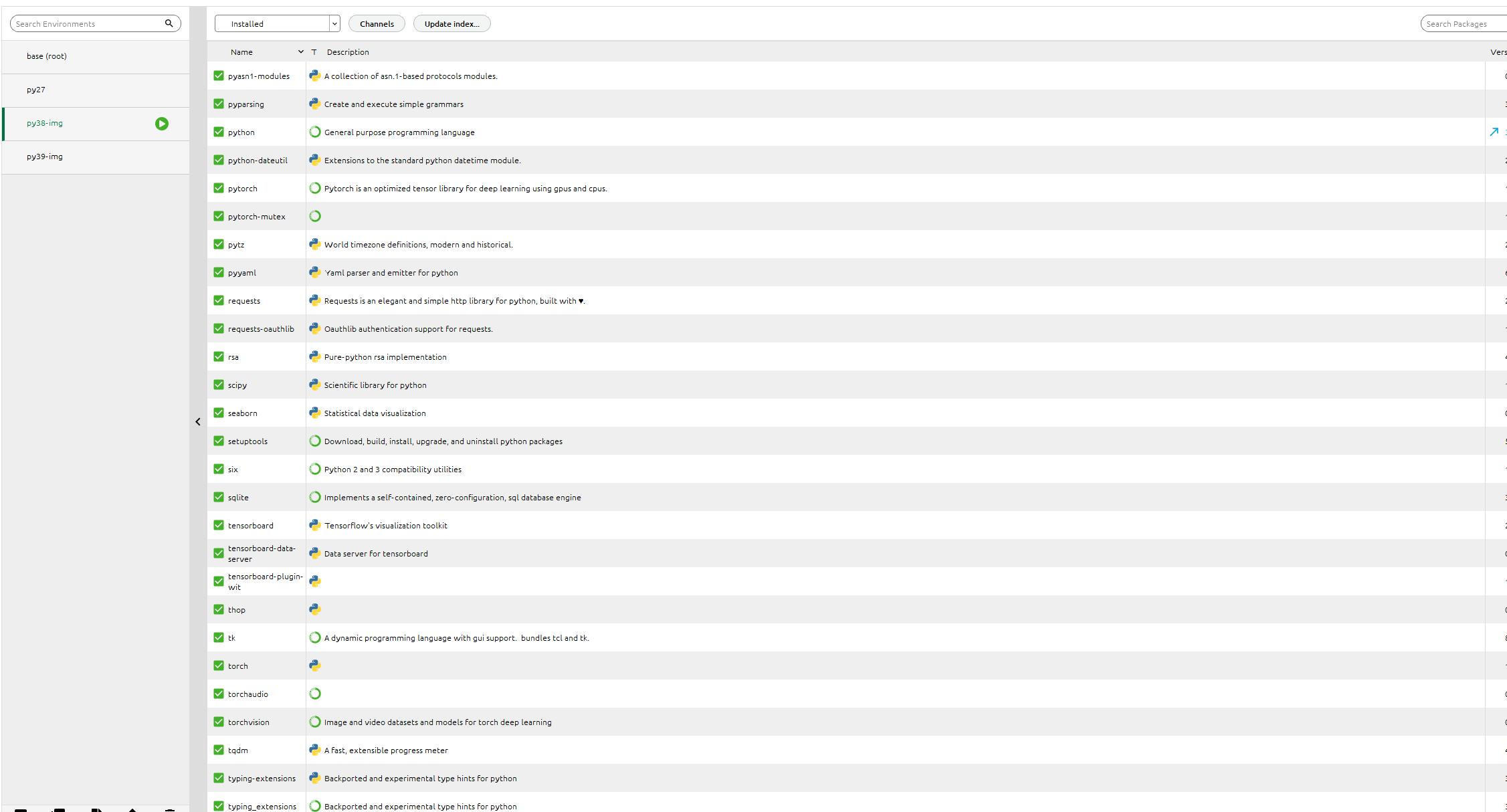
yolov5克隆到本地
官方仓库clone命令 git clone https://github.com/ultralytics/yolov5
我这采取的方案是fork了仓库 同步到了gitee,然后clone
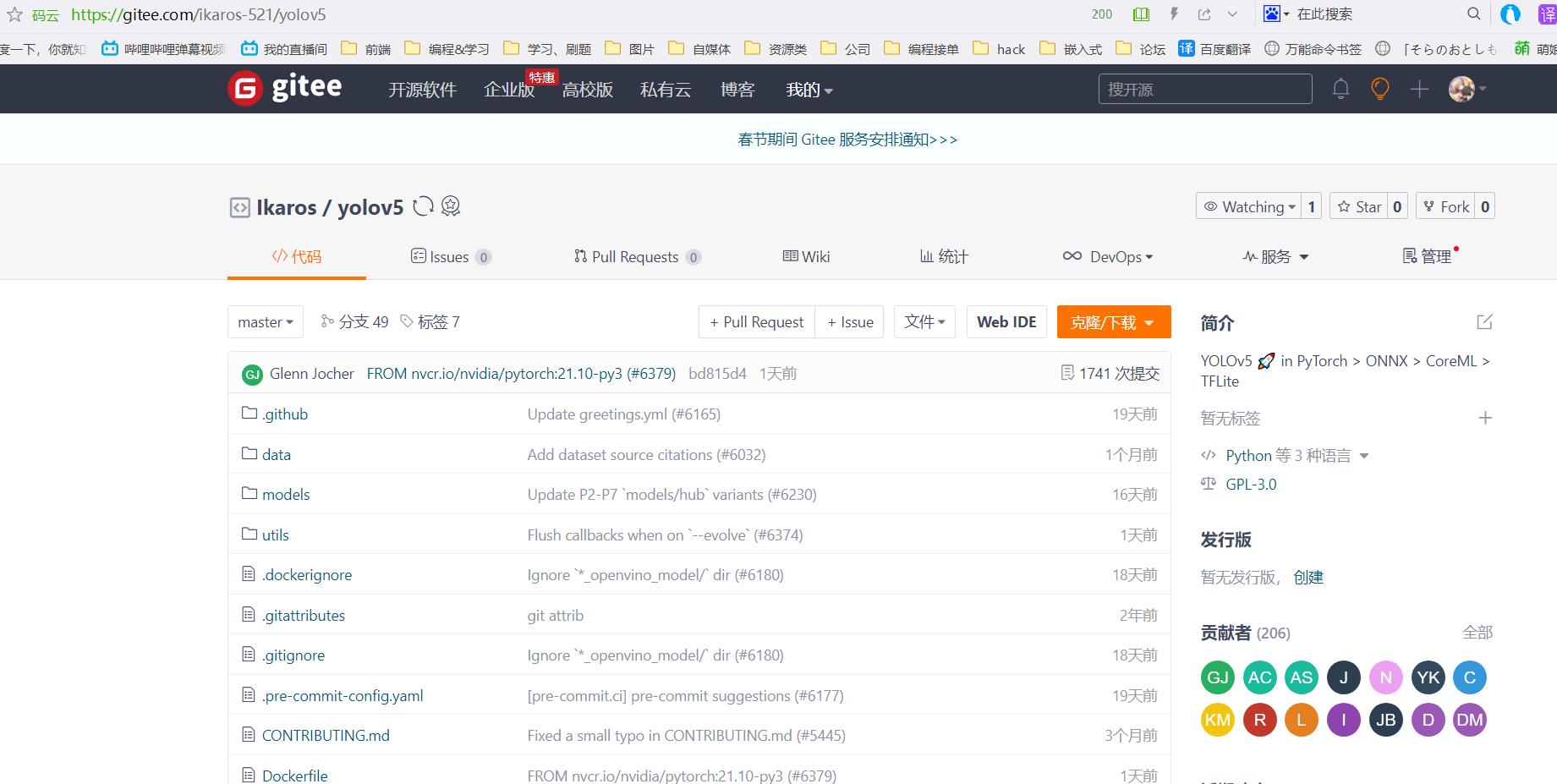
安装相关依赖库
如果你不想用pycharm,也可以直接cmd进入指定目录,然后执行pip安装命令
我这采用pycharm打开工程,配置为 conda的环境
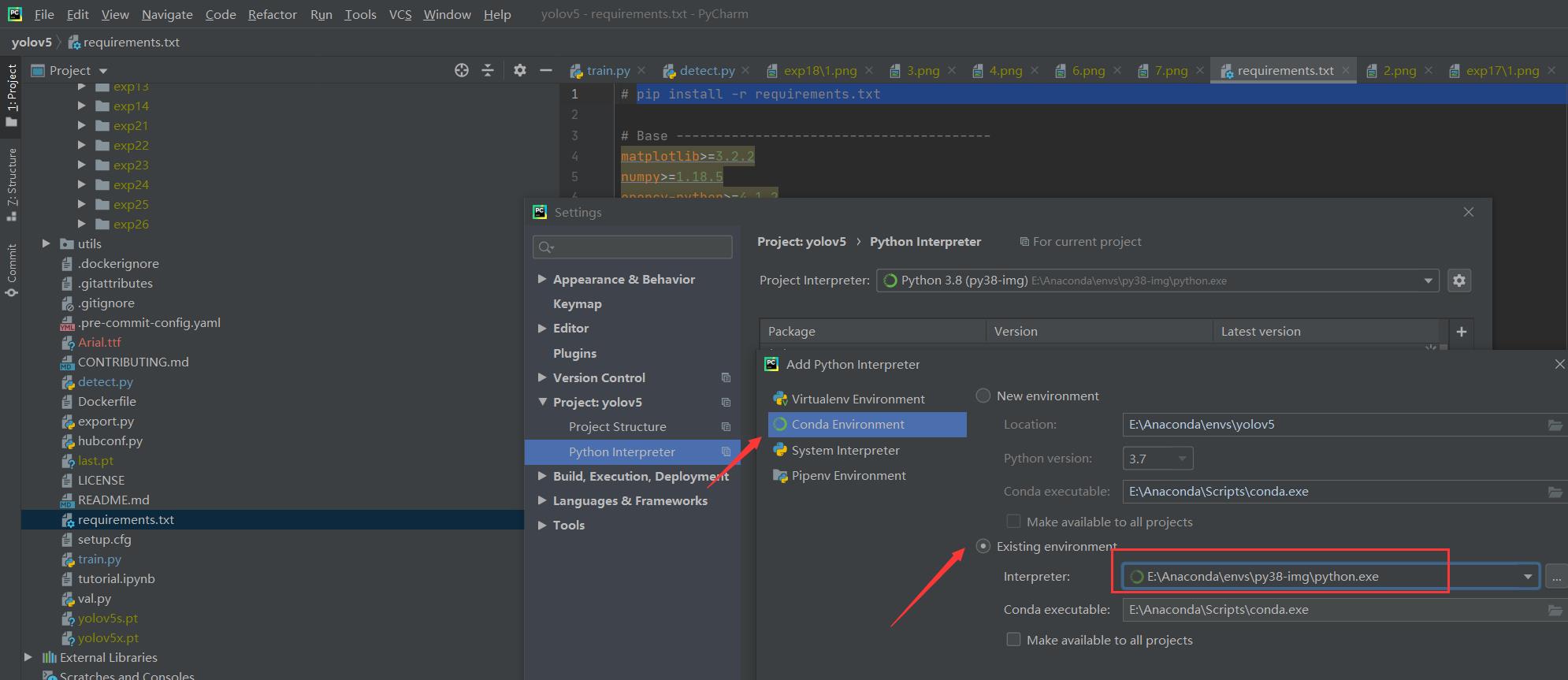
根据官方说明文档进行安装
激活我们刚才创建的环境 py38-img

执行pip命令 pip install -r requirements.txt

完成安装。
ps:我这已经换了源
路径:C:\\Users\\用户名\\pip
pip.ini 内容为:
[global]
index-url = https://pypi.tuna.tsinghua.edu.cn/simple
[install]
trusted-host = https://pypi.tuna.tsinghua.edu.cn
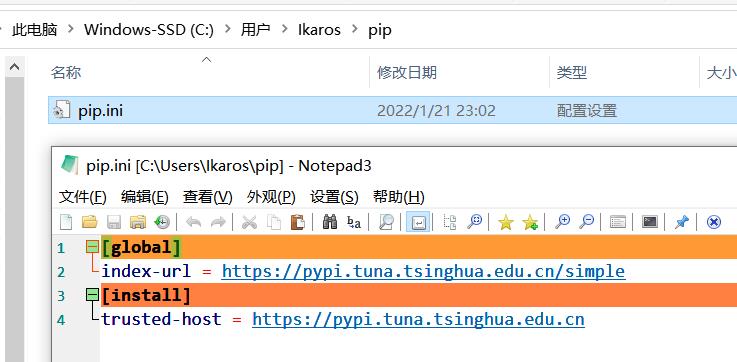
安装CUDA和cuDNN(有显卡需求的话)
查看NVIDIA显卡计算能力
据 RuntimeError: CUDA error: no kernel image is available for execution on the device得知,如果你要使用torch 1.7,GPU算力至少要达到5.2。那么根据博主提供的算力表,如果没达标就不用装了。pytorch安装cpu版本吧。

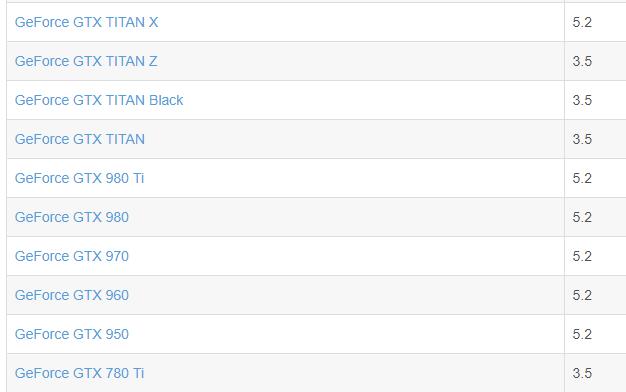
ps:我的显卡是RTX2060
参考文章:win10安装CUDA和cuDNN的正确姿势
CUDA下载页面:https://developer.nvidia.com/cuda-downloads
cuDNN下载页面:https://developer.nvidia.com/rdp/cudnn-download
根据教程 安装和配置好环境, cudnn里面的文件 需要复制到 cuda的对应文件夹下。这里访问比较困难
我这同步到了阿里云盘:「cuda_11.6.0_511.23_windows.exe」https://www.aliyundrive.com/s/6Q4yRH9nJ8Q

环境变量的配置
C:\\Program Files\\NVIDIA GPU Computing Toolkit\\CUDA\\v11.6
C:\\Program Files\\NVIDIA GPU Computing Toolkit\\CUDA\\v11.6\\lib\\x64

安装完后的测试 nvcc -V

C:\\Program Files\\NVIDIA GPU Computing Toolkit\\CUDA\\v11.6\\extras\\demo_suite执行测试程序

这是我的相关参数
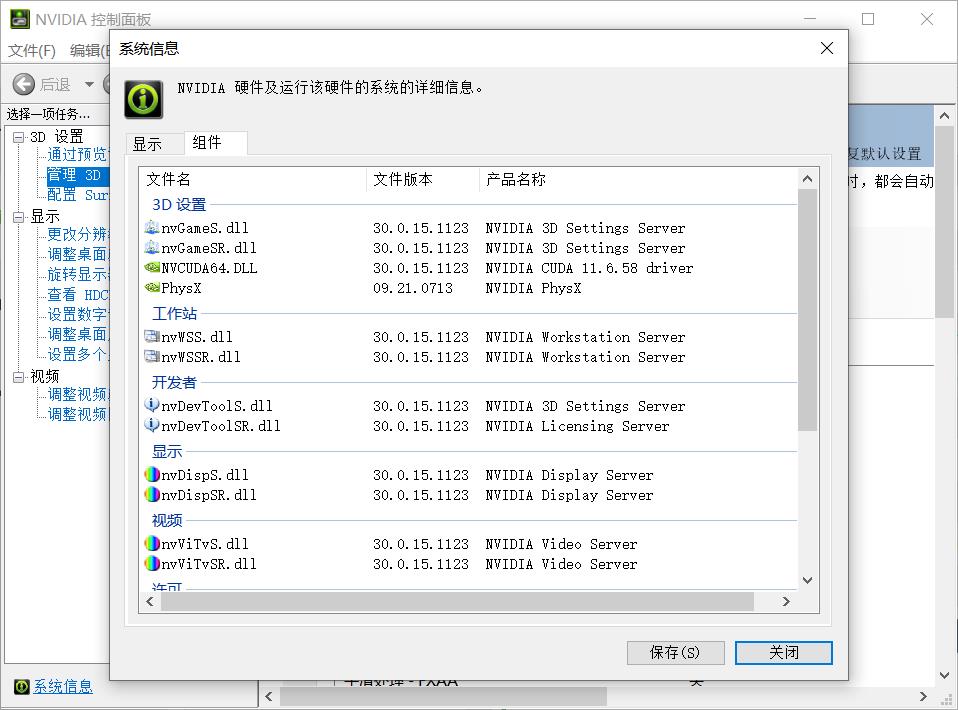
pytorch单独再次安装(视情况采用)
如果你前面采用了pip安装依赖,此处需要先卸载了 pip uninstall torch torchvision
因为pytorch这块安装有 cpu only的版本 所以我掉了很多次坑
参考:Windows环境下Anaconda3安装配置pytorch详细步骤(踩坑汇总)
Pytorch版本、CUDA版本与显卡驱动版本的对应关系
注意版本是否对应!
pytorch官网:https://pytorch.org/
根据你的需求生成安装命令,(后缀的 -c pytorch不删 是走官网下载,可以尝试删除)
conda install pytorch torchvision torchaudio cudatoolkit=11.3 -c pytorch
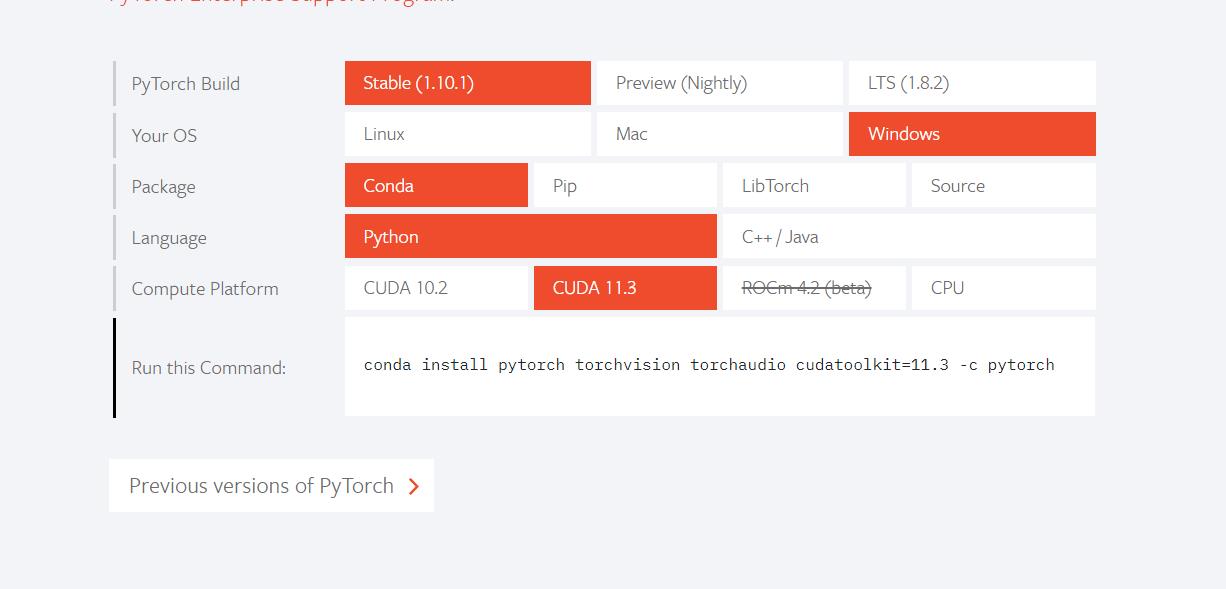
查看 安装的相关库 conda list ,没有带 cpuonly 对头

CPU版 conda install pytorch torchvision torchaudio cpuonly -c pytorch

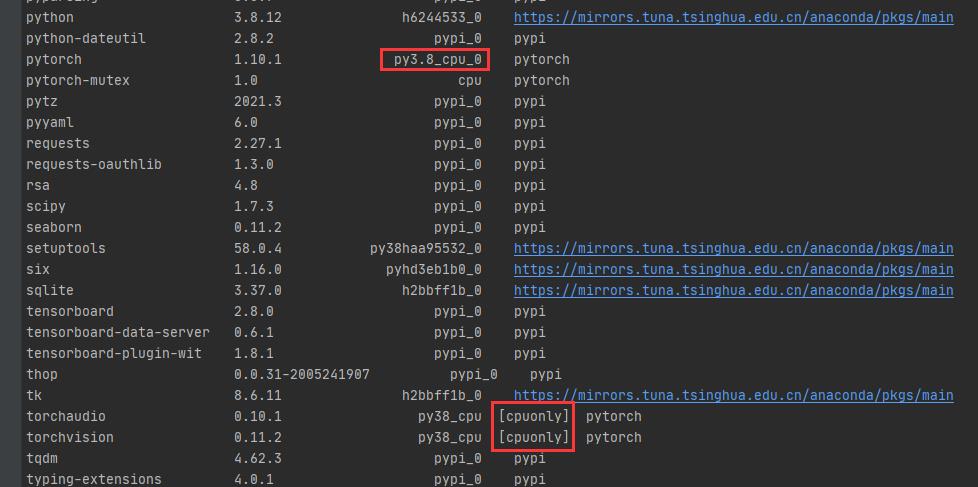
测试官方demo
detect.py识别 bus.jpg
源码里面写了相关的使用命令和传参,当然直接跑多半会报错
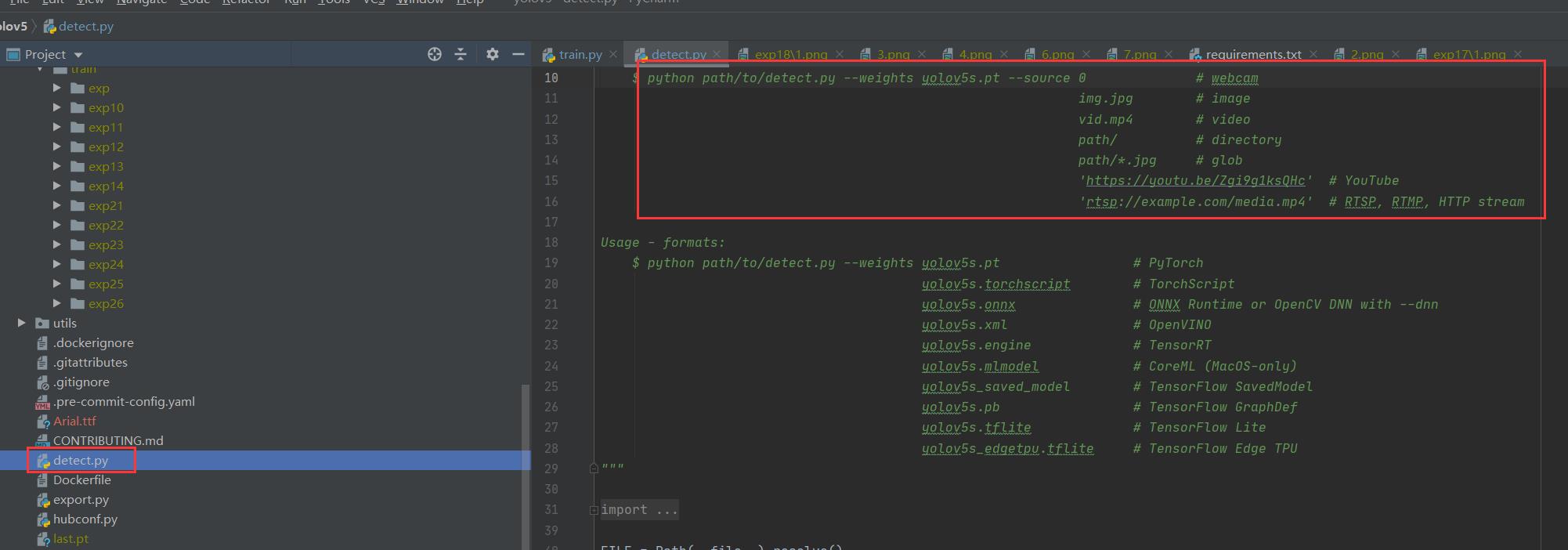
正常情况运行命令 python detect.py --weights yolov5s.pt --source data\\images\\bus.jpg,可以完成图片识别,显示结果到runs下的exp里

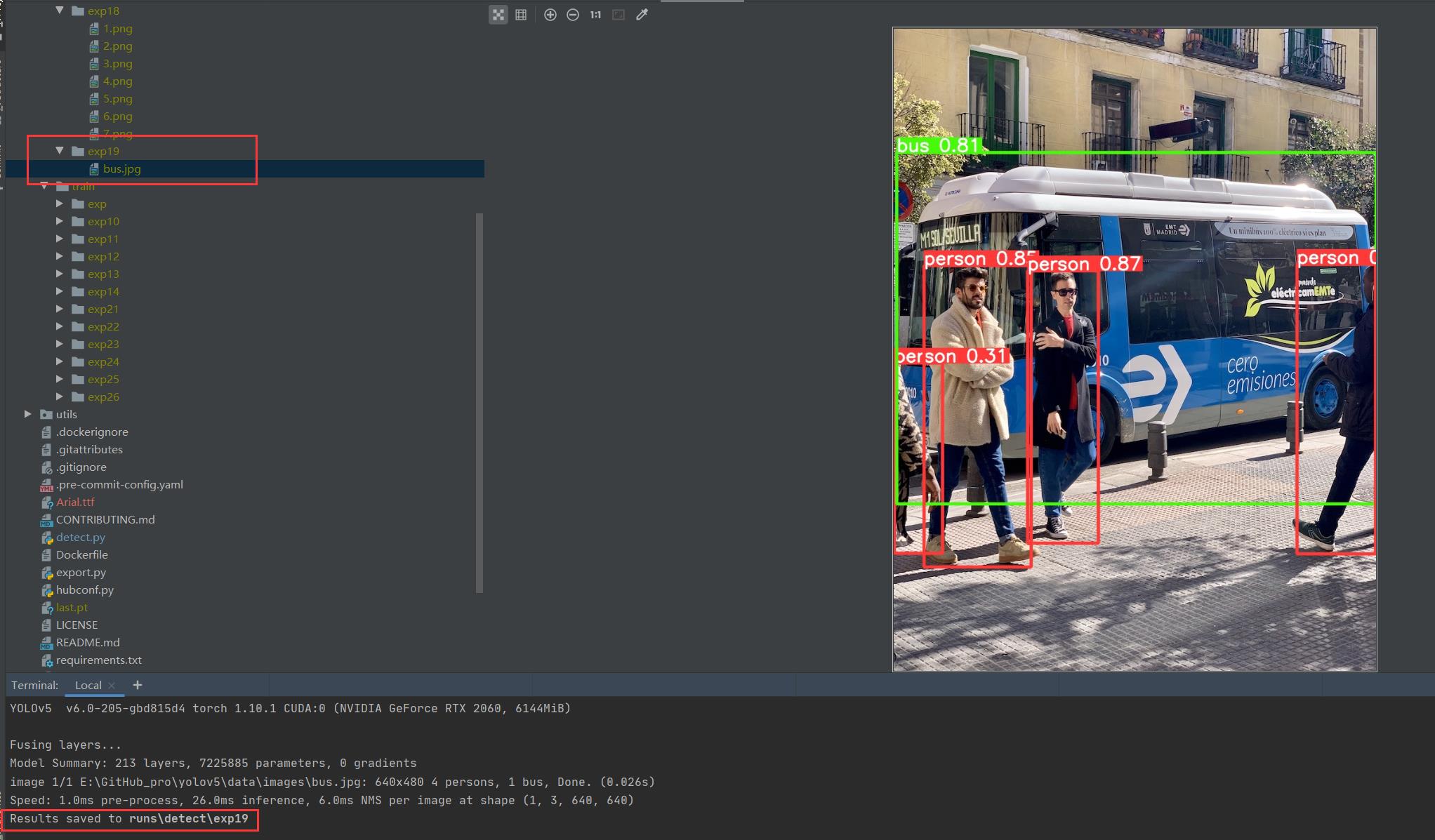
当然 细心的你会发现缺少了 对应的权重文件 yolov5s.pt,相应的权重文件可以在官方github仓库下载:https://github.com/ultralytics/yolov5/releases
当然如果你没有下载,例程也会自动帮你运行下载程序,不过网络不好的情况下多半会出现443等报错然后下载失败。
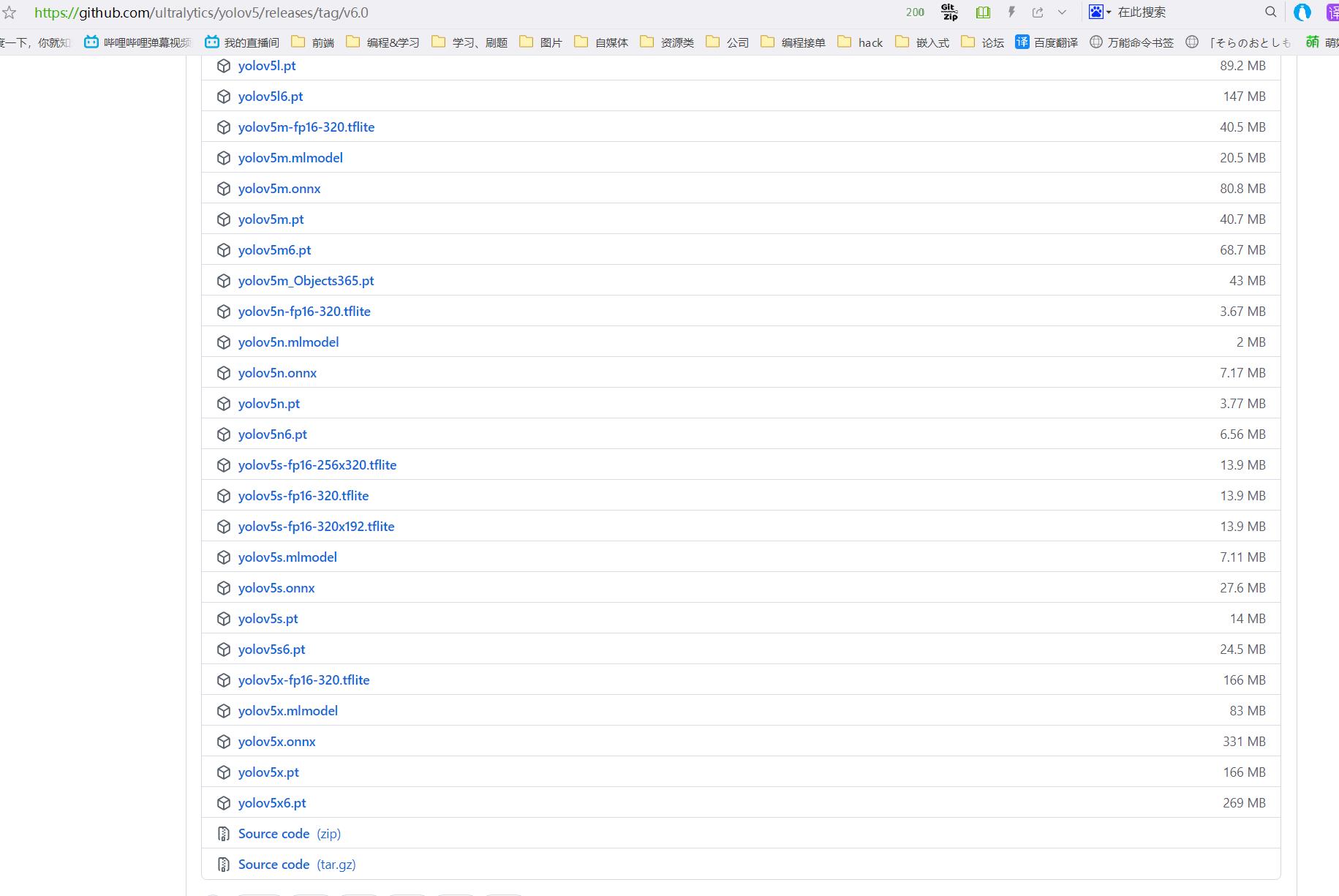
另外你例程会下载字体包 Arial.ttf,如果下载失败可以自行去提示的官网下载,然后存放在指定路径下 C:\\Users\\用户名\\AppData\\Roaming\\Ultralytics,并安装字体包。
我这阿里云盘也上传了:https://www.aliyundrive.com/s/xzgh5fr6yLU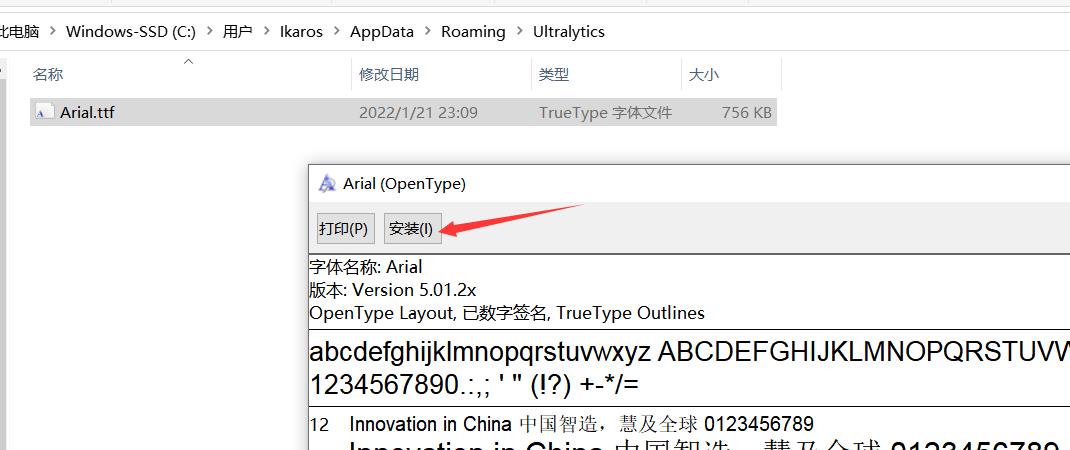
train.py训练模型
训练官方提供的coco128
源码里也同样提供了 参考的命令 当然直接跑也是运行不了的啦

当然我这提供了运行命令,先创建文件夹 datasets,然后将coco128数据集下载后解压进去(当然例程会自己下载,不过我这下载还是失败了)
$ cd datasets
$ python ..\\train.py --data ..\\data\\coco128.yaml --img 128
例程会读取 data\\coco128.yaml 文件,yaml里面写了下载的数据集路径,你可以手动下载然后解压到datasets里面
https://ultralytics.com/assets/coco128.zip
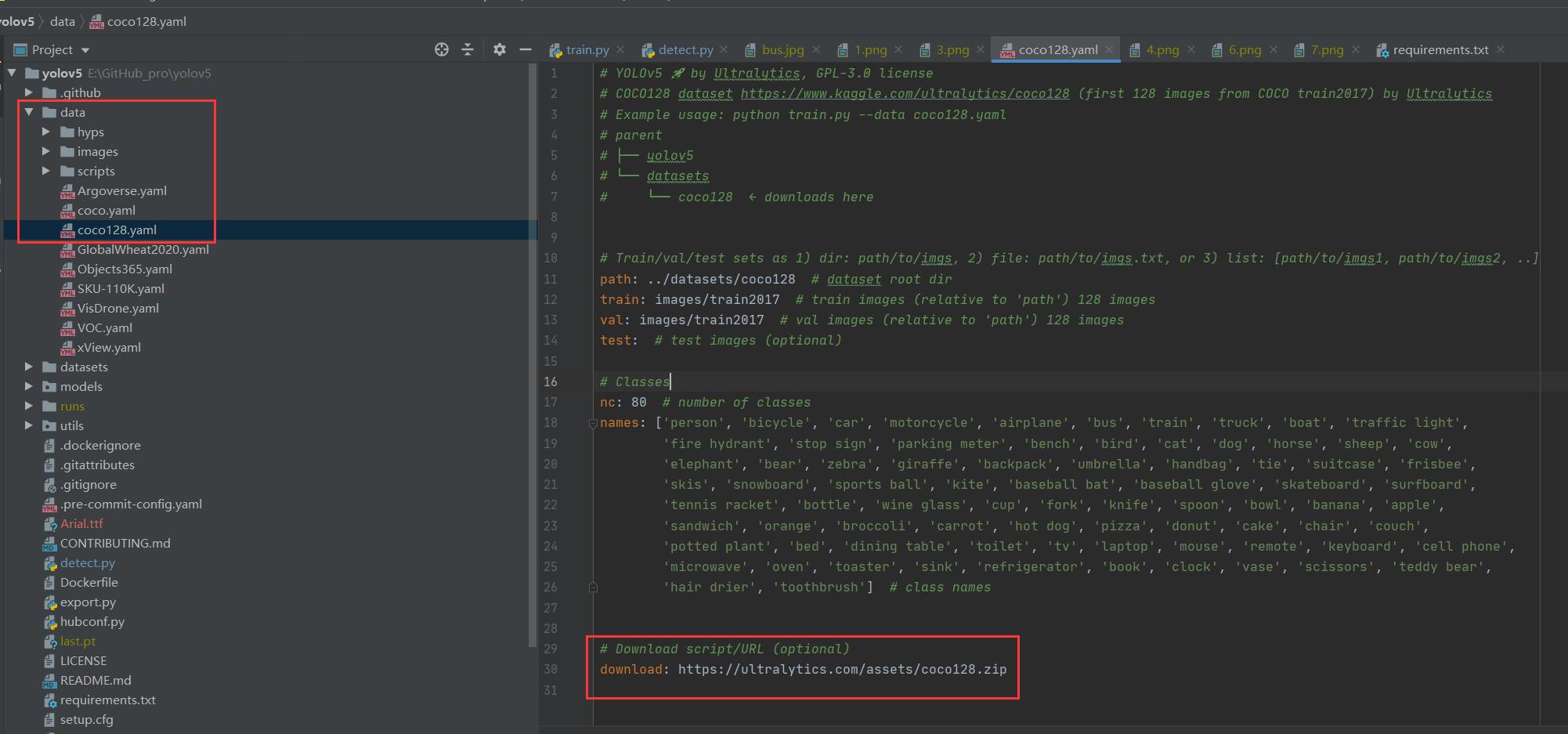

再次执行我们的训练命令 ,开始训练(默认训练300轮 可以通过–epochs 修改轮数,另外默认配置还是比较吃电脑配置的,如果只是测个程序而已,可以使用我这提供的第3条命令)
(如果报错:DefaultCPUAllocator: not enough memory,内存不足,就需要调小配置 更多报错参考文章末尾的目录 报错相关)
$ cd datasets
$ python ..\\train.py --data ..\\data\\coco128.yaml --img 128
$ python ..\\train.py --data ..\\data\\coco128.yaml --epochs 3 --batch-size 1 --workers 1 --img 128



训练自己的模型
当然可以不训练这个了,自己随便搞个test训练训练(这个test训练集 由labelimg 工具协助生成) labelimg相关使用可以参考下面的部分 传送门
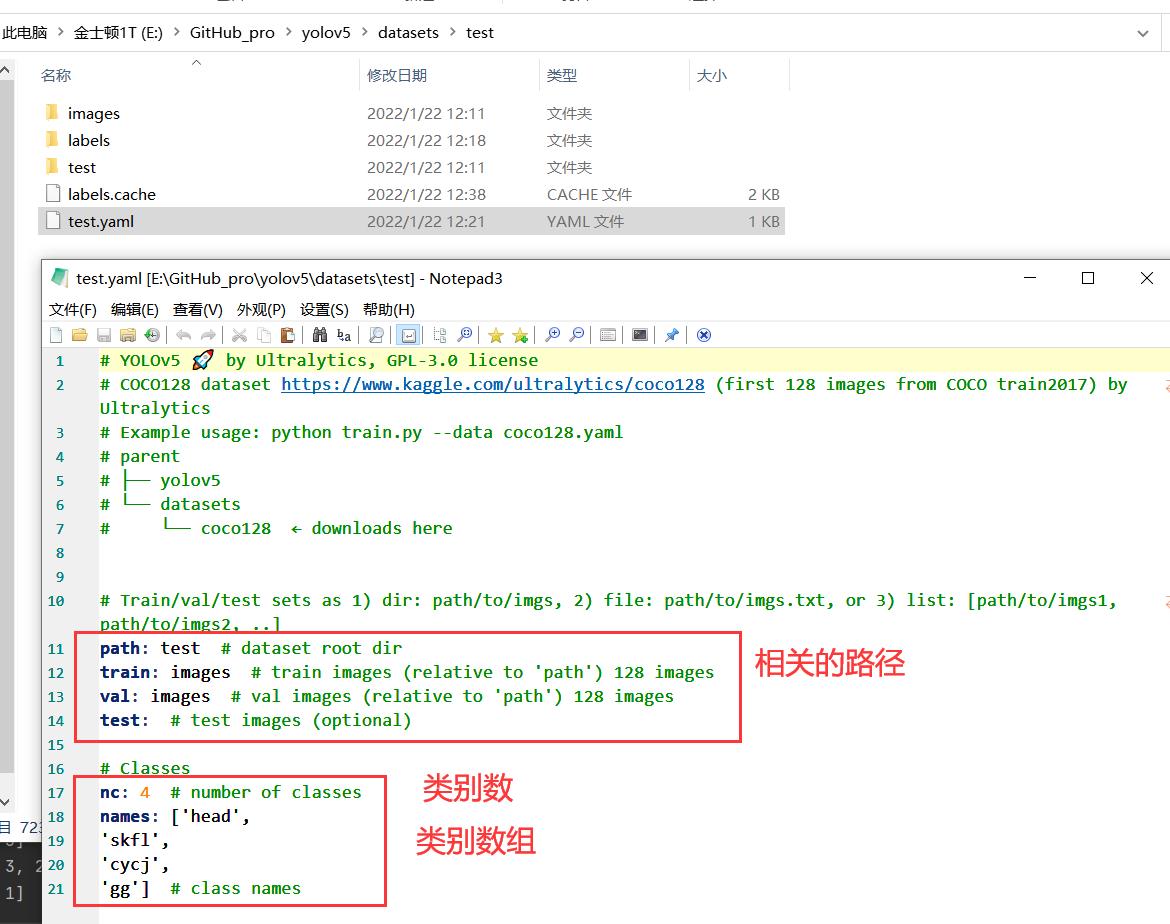
开始训练 python ..\\train.py --data test\\test.yaml --epochs 3 --batch-size 2 --weights ..\\runs\\train\\exp26\\weights\\last.pt --nosave --cache (注意我这里传了不少参数,如果你不需要可以不加 --epochs是训练轮数,因为测试所以先调小点,节约时间。具体各个参数的含义可以看下面的参考图或直接看源码)

报错 OSError: [WinError 1455] 页面文件太小,无法完成操作。你可以调小 --batch-size
配合 命令 nvidia-smi,查看显卡信息
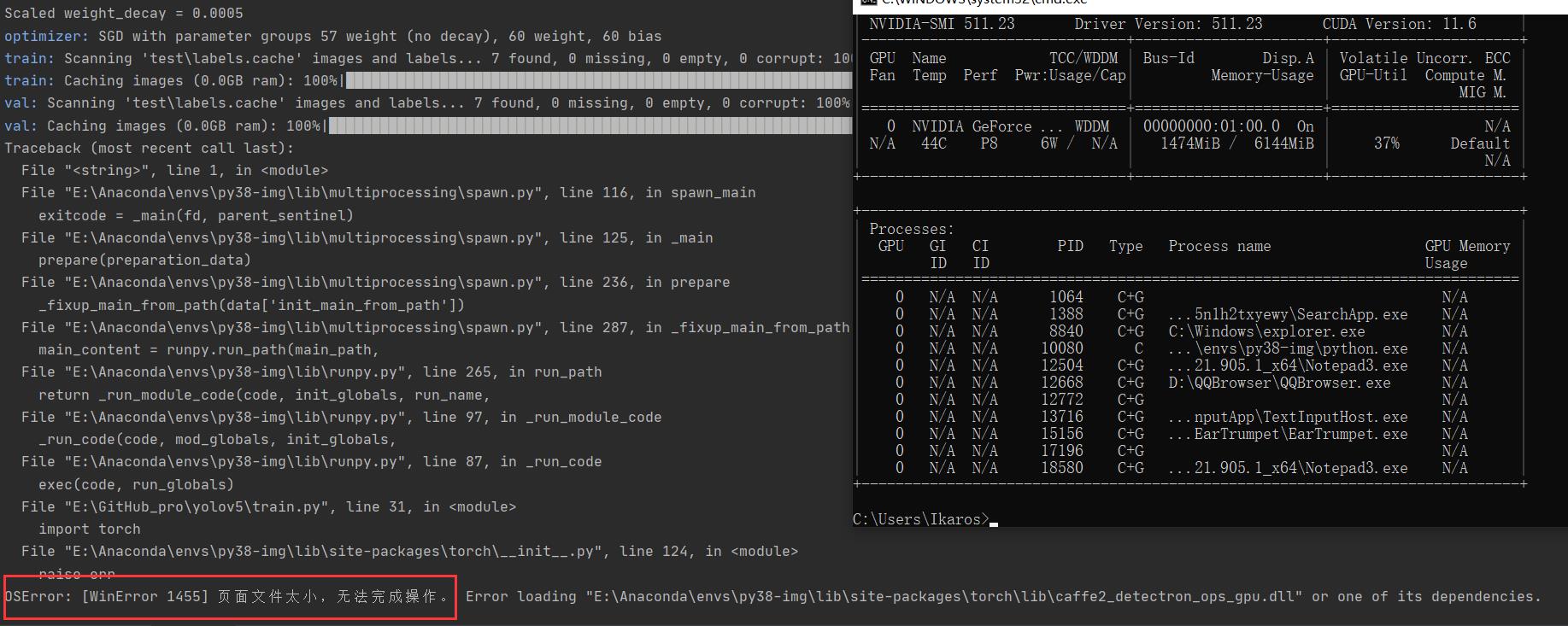
下图转自 yolov5训练相关参数解释
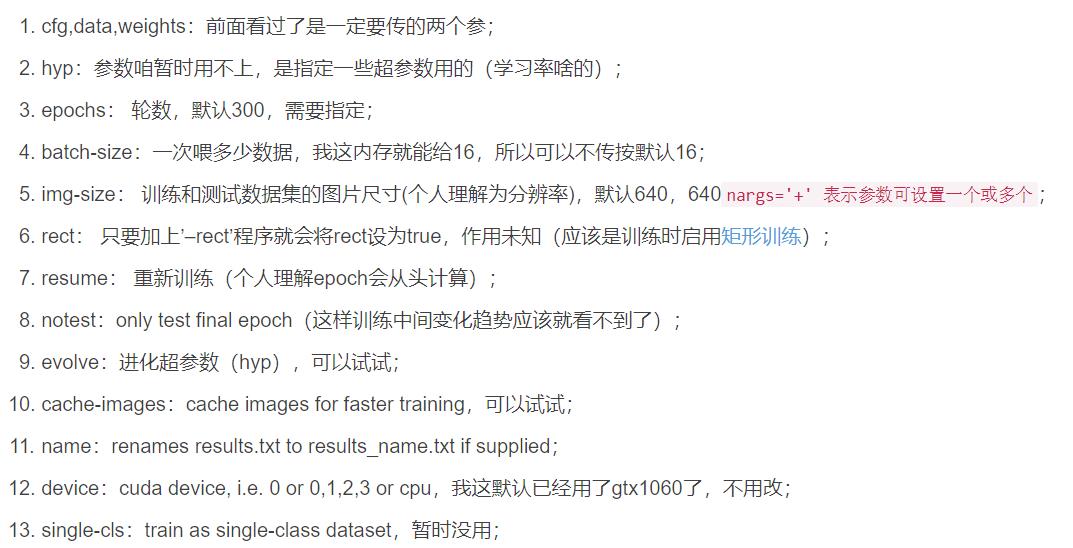
相关训练参数可参考:yolov5训练相关参数解释
我们调小 --batch-size python ..\\train.py --data test\\test.yaml --epochs 3 --batch-size 2 --weights ..\\runs\\train\\exp26\\weights\\last.pt --nosave --cache,成功完成训练。训练结果默认存储在 runs\\train\\exp 等下面,我们的权重文件 生成了2个 last.pt, best.pt 。当然可能你只会生成1个last.pt,问题不大,继续练。
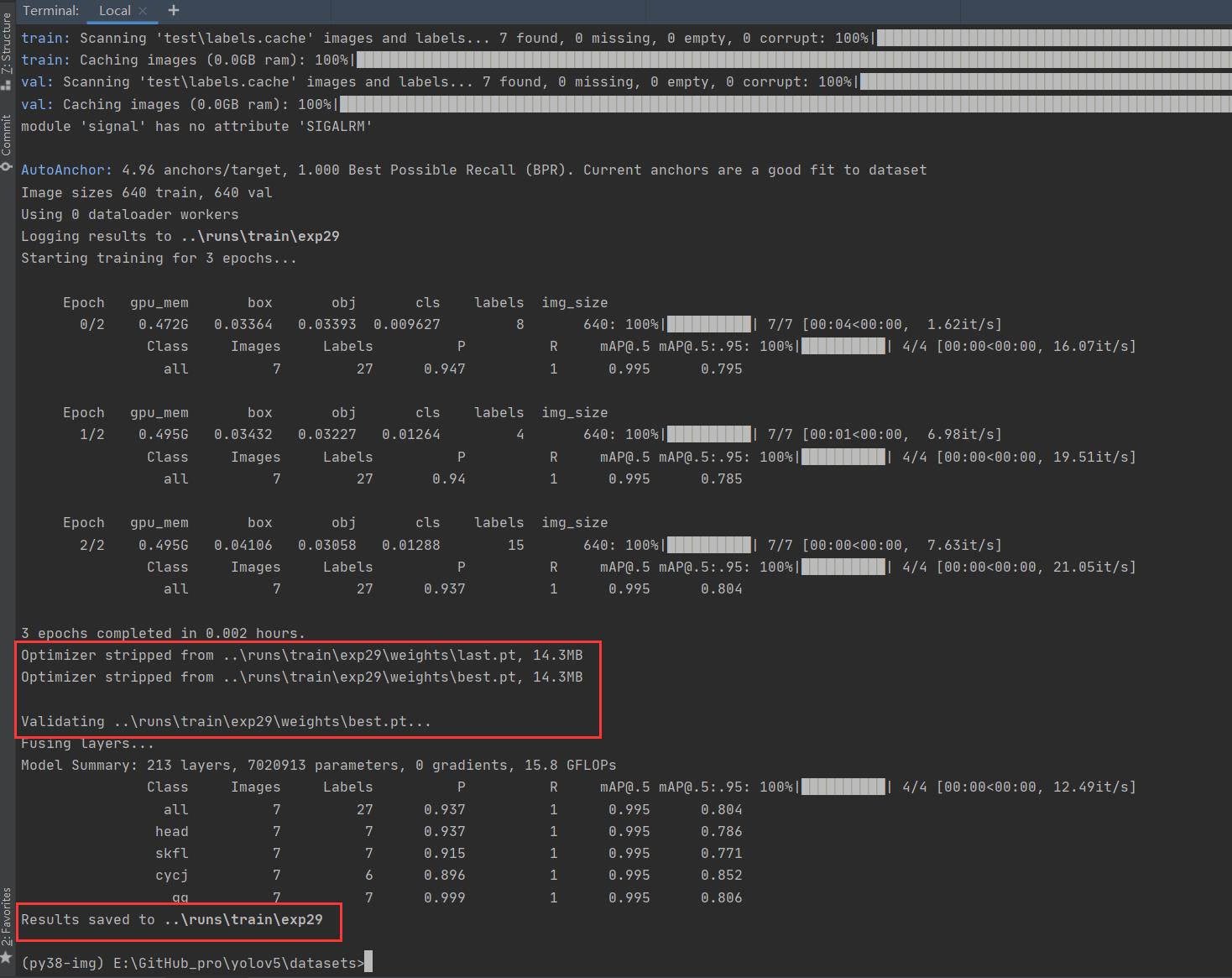
训练完后打开对应文件夹,会看到相应的分析数据,相关解析可参考:【深度学习】yolov5 可视化训练结果以及result.txt解析

训练好后的权重 pt拿去 再次detect.py识别
相关命令
$ cd datasets
$ python ..\\detect.py --weights ..\\runs\\train\\exp29\\weights\\best.pt --source test\\test --conf-thres 0.5
源码有各传参的解释,我们这追加了 --conf-thres 传入

因为这个模型我已经提前锻炼过,所以 准确性较高。

置信度还是很不错的 ,当然你刚开始训练的话,基本也就0.1差不多(粗略估计)
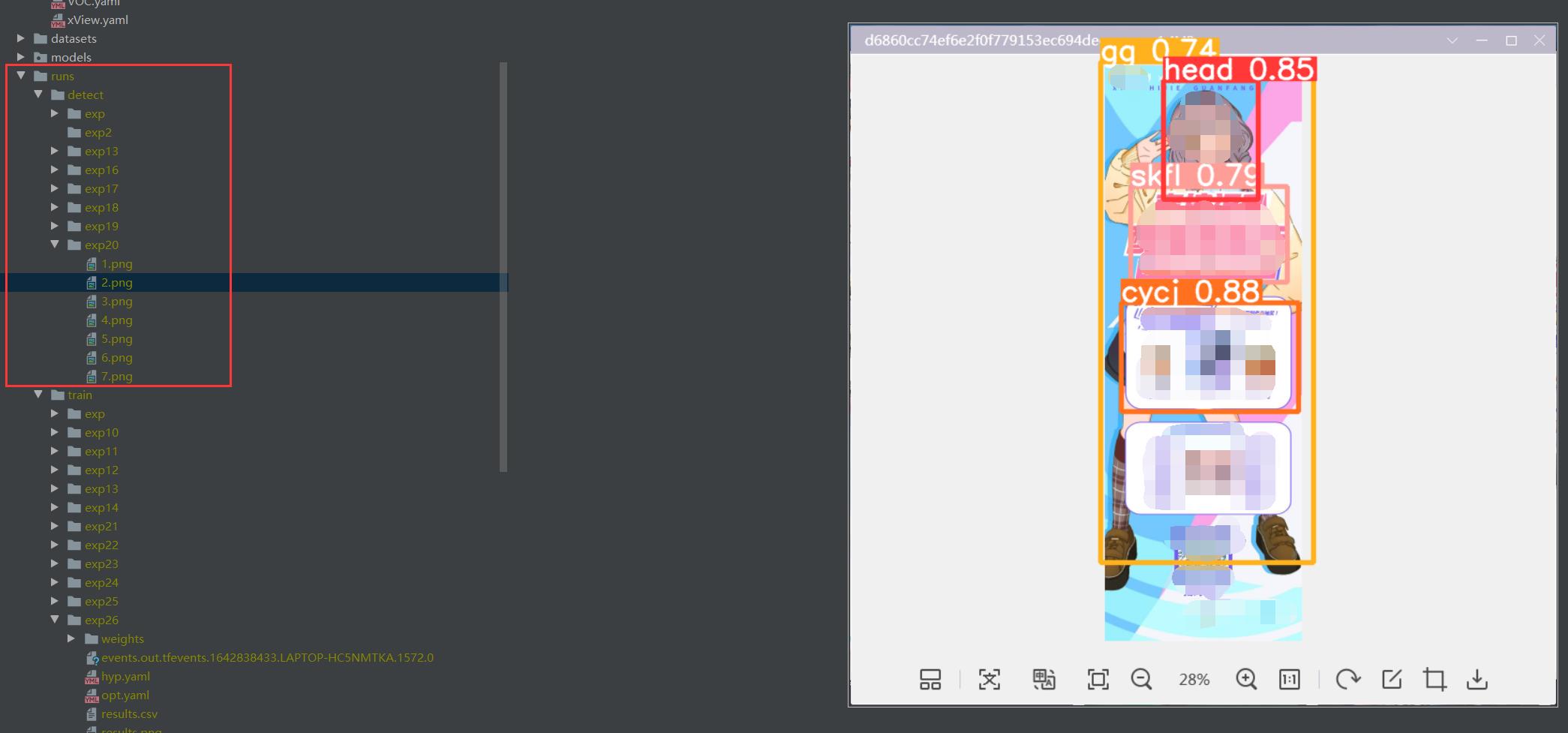
labelimg相关使用
下载
官方仓库:https://github.com/tzutalin/labelImg/releases

使用
解压,运行exe
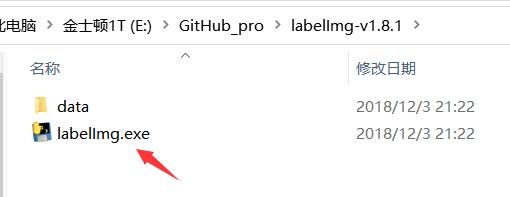
删除默认提供的类名(根据自己需要)

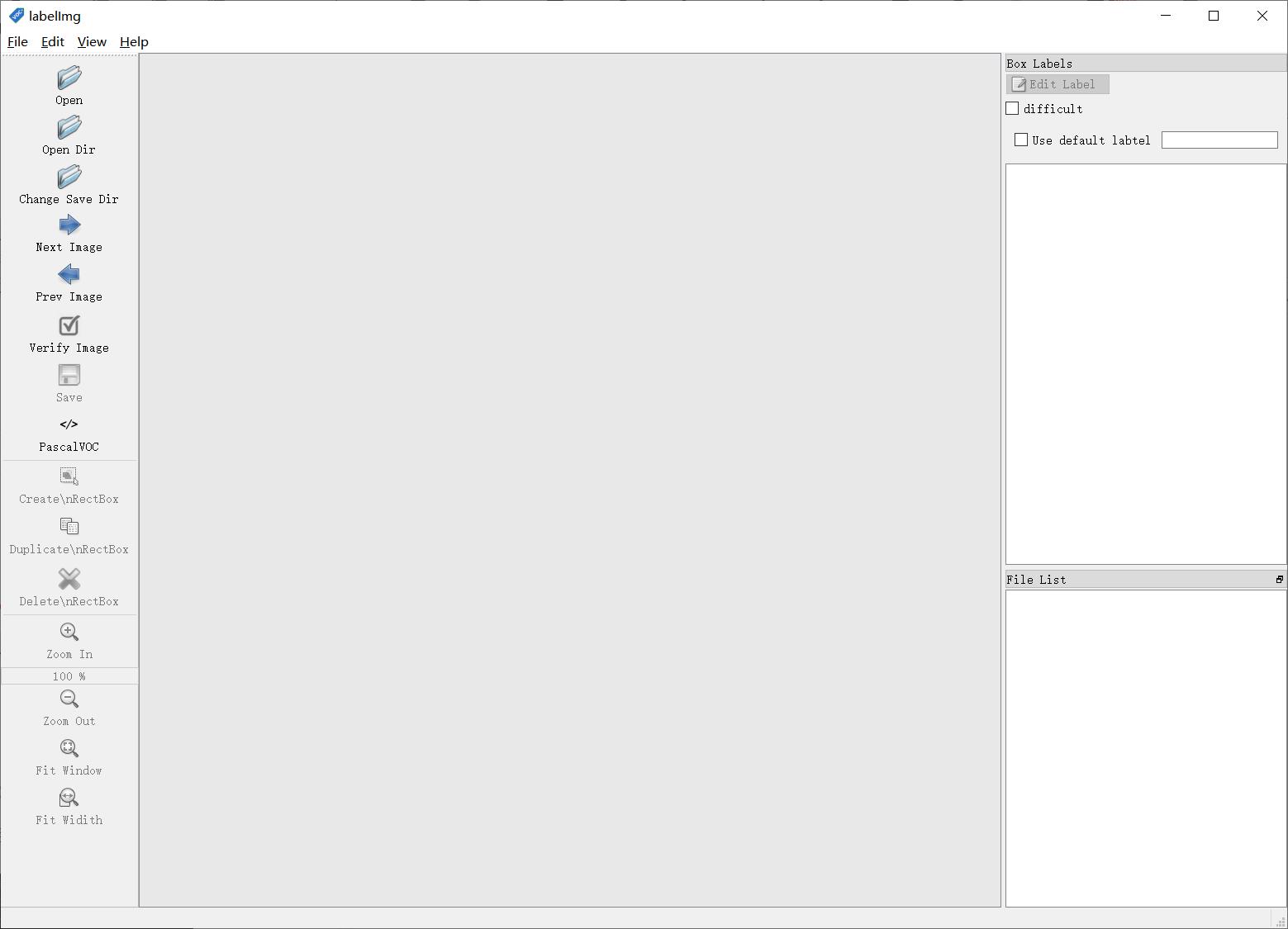
我这推荐的几个实用的快捷键
w 创建选框
a 前一张图片
d 后一张图片
ctrl+S 保存
准备需要标注的图片数据集
我这按自己喜欢的结构创建,images 和 labels 文件夹 和 yaml文件,在外面套个文件夹
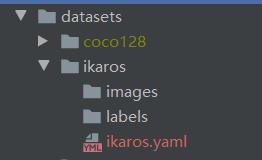
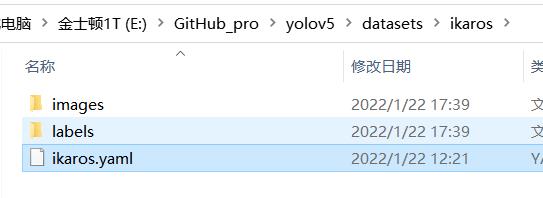
我们将要标注的原始图片放在 images文件夹内
从百度爬点图片
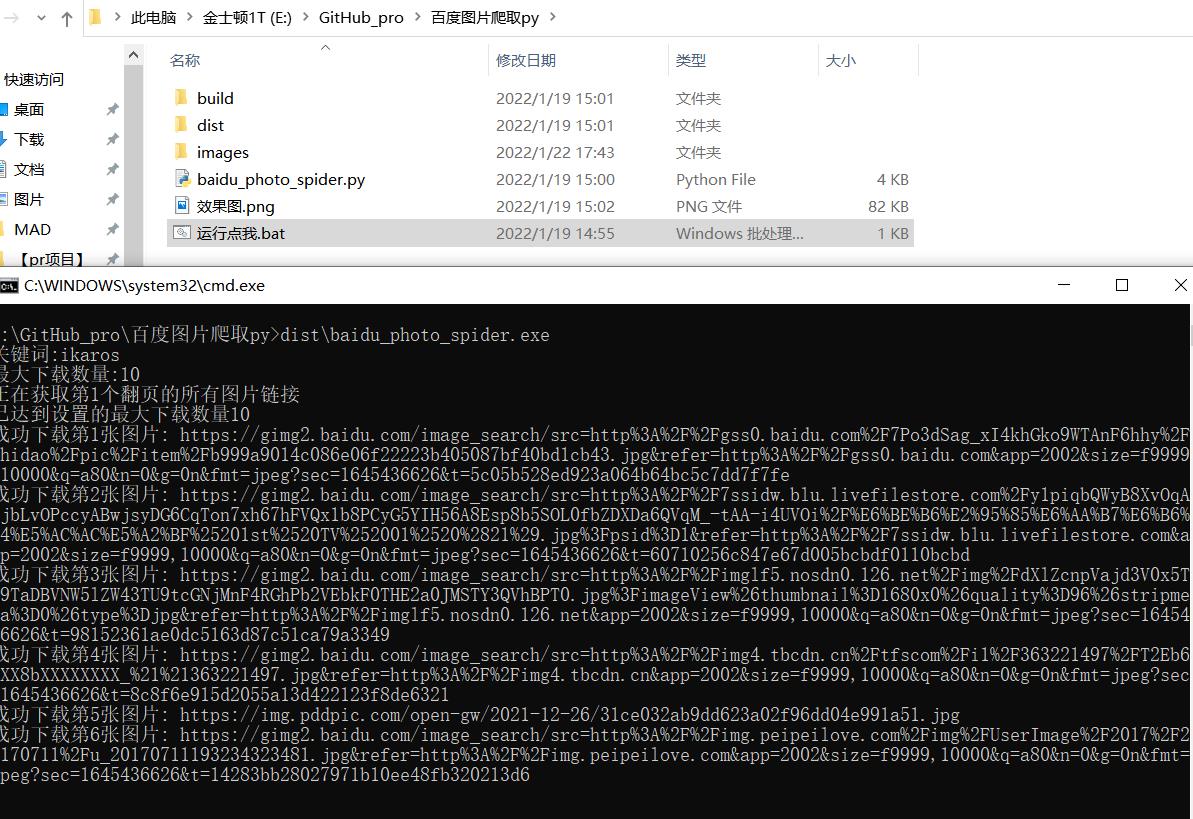

然后我们开始用工具进行标注,“open dir”打开我们需要标注的图片的文件夹
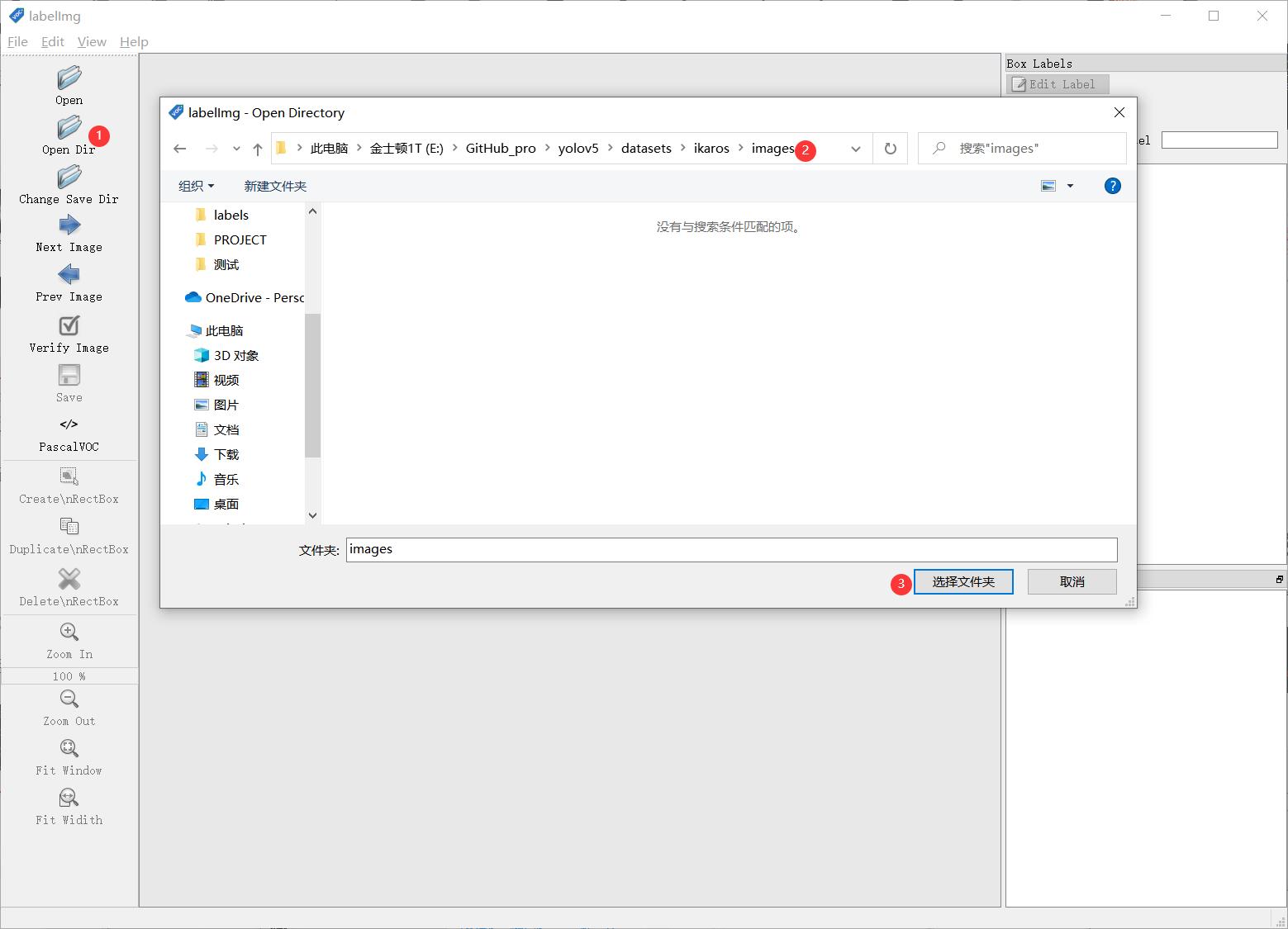
图片会自动加载进来
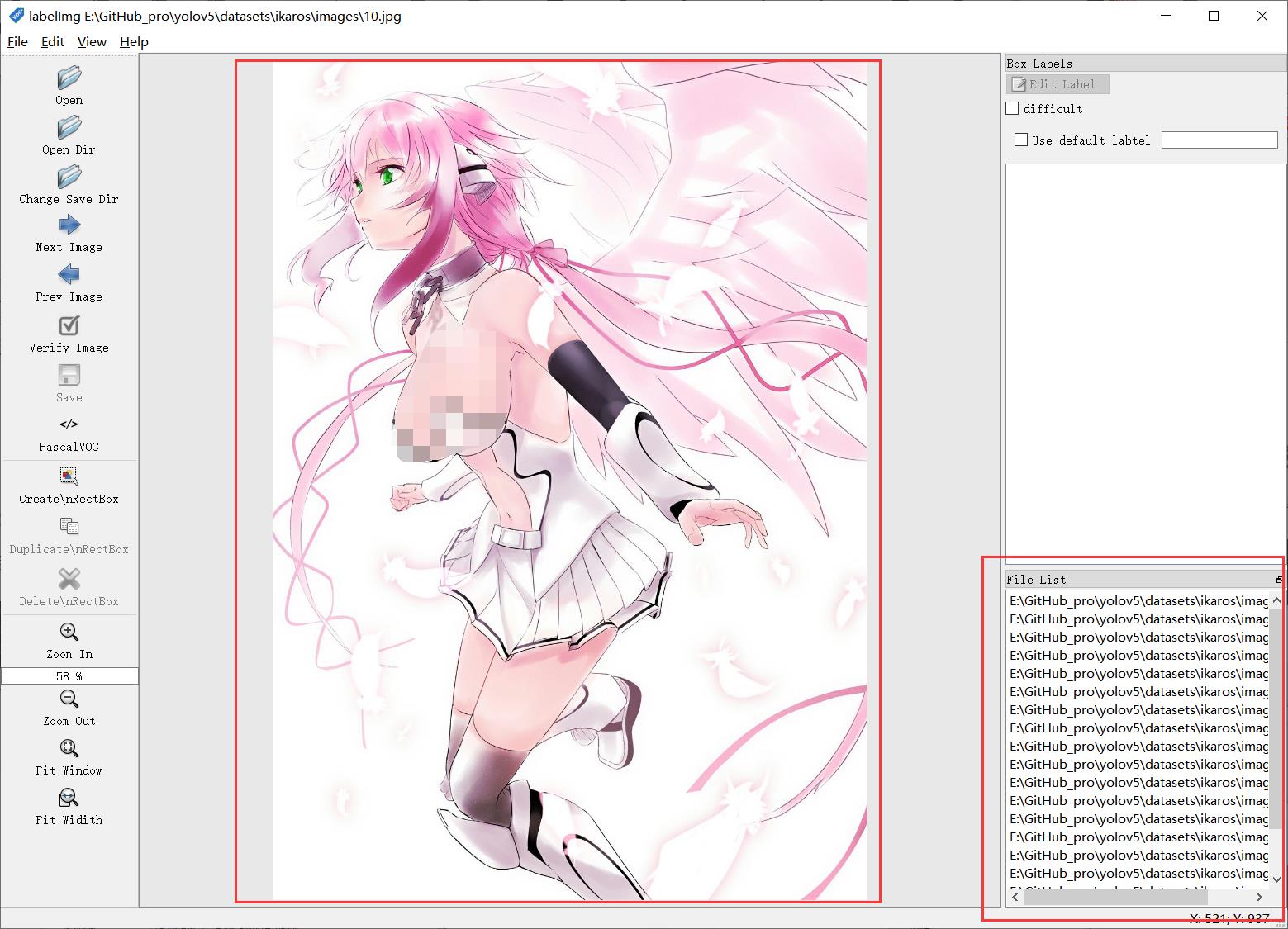
“change save dir”设置保存labels的路径为我们的 labels
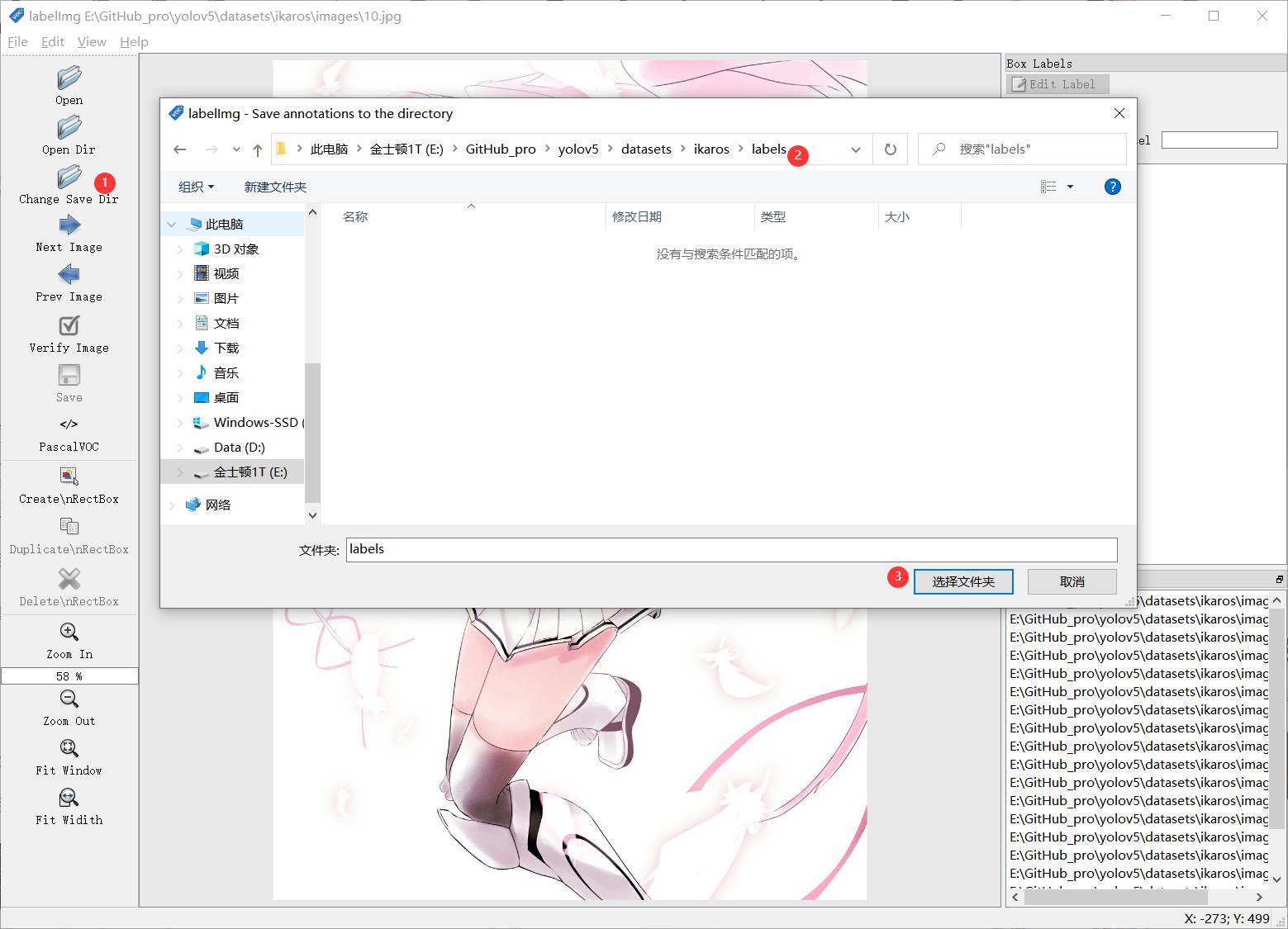
修改标注的格式为yolo(点击切换)
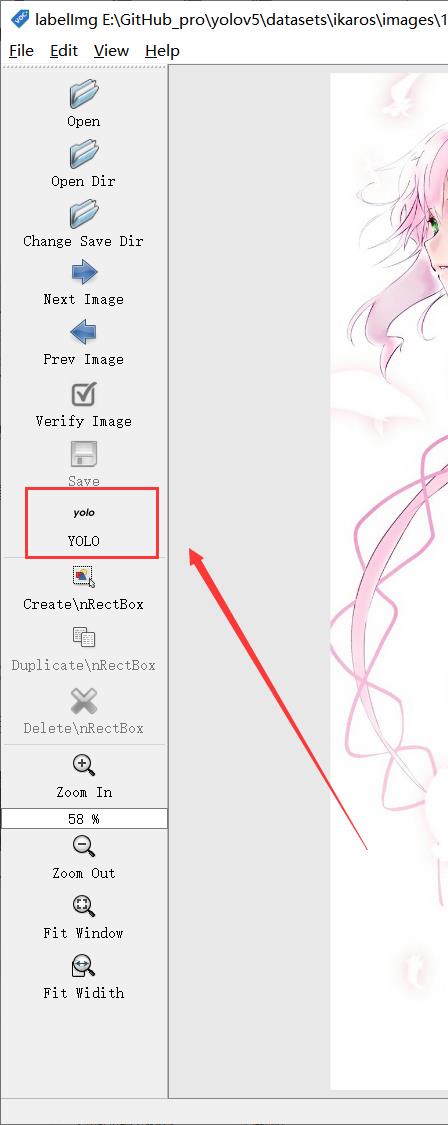
然后就是使用我们的快捷键 进行框选区域和打标签了。(记得保存,另外类别数需要大于1)
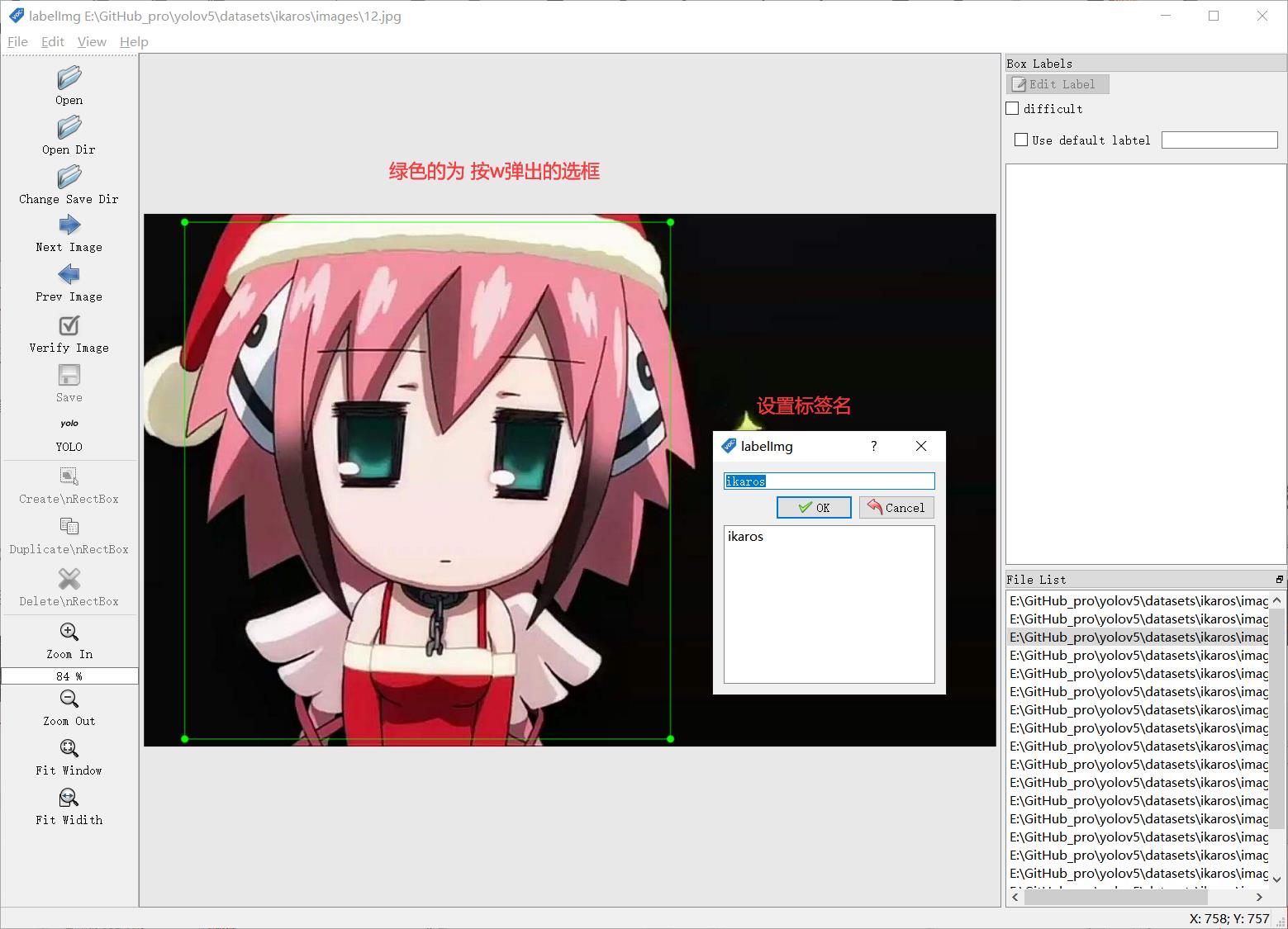
标注完,保存后,生成的配置都在 对应文件夹下,classes.txt为所有的labels,其他单个文件为 对应label的参数
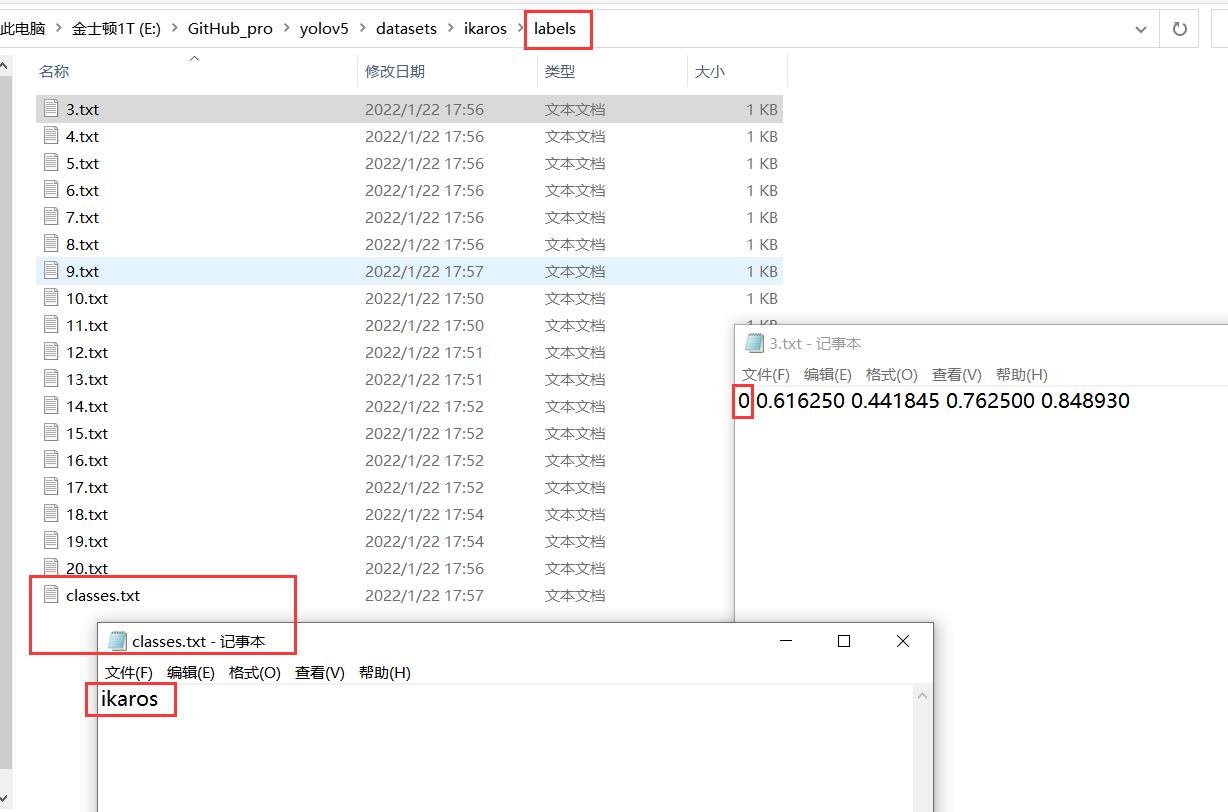
修改 yaml文件的相关配置
# Train/val/test sets as 1) dir: path/to/imgs, 2) file: path/to/imgs.txt, or 3) list: [path/to/imgs1, path/to/imgs2, ..]
path: ikaros # dataset root dir
train: images # train images (relative to 'path') 128 images
val: images # val images (relative to 'path') 128 images
test: # test images (optional)
# Classes
nc: 1 # number of classes 类别数(需要大于1)
names: ['ikaros'] # class names
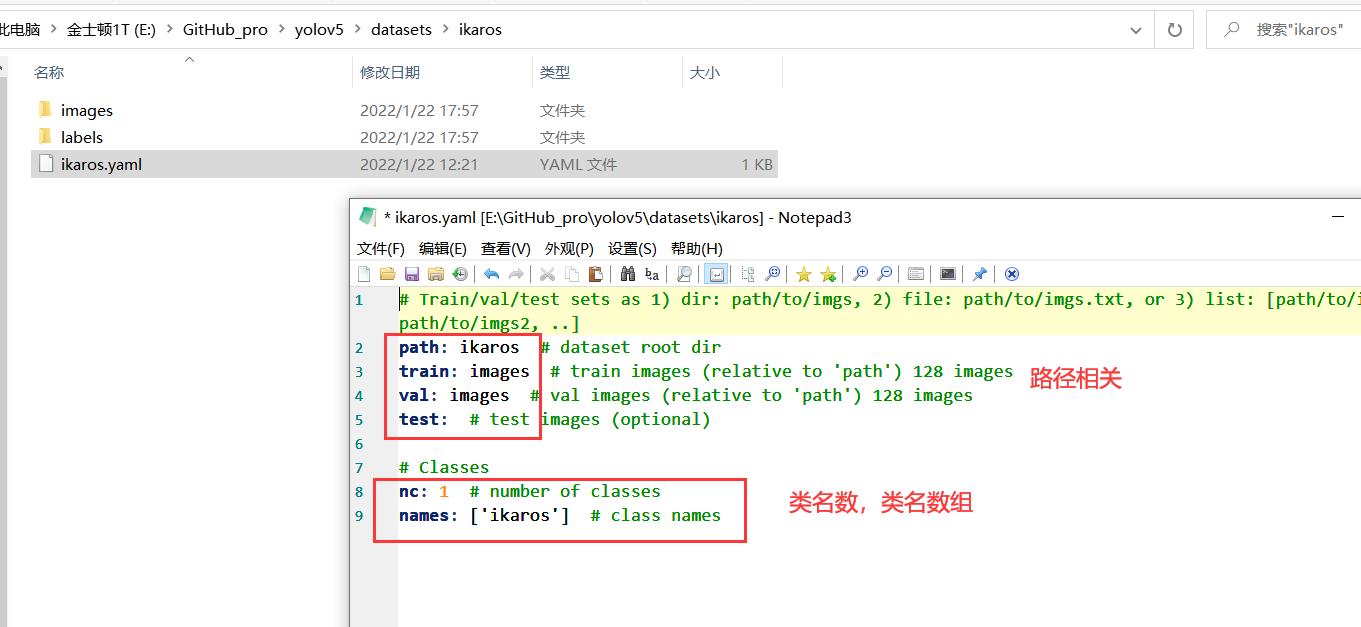
拉去训练,1组报错

追加一个类

改yaml为
# Train/val/test sets as 1) dir: path/to/imgs, 2) file: path/to/imgs.txt, or 3) list: [path/to/imgs1, path/to/imgs2, ..]
path: ikaros # dataset root dir
train: images # train images (relative to 'path') 128 images
val: images # val images (relative to 'path') 128 images
test: # test images (optional)
# Classes
nc: 2 # number of classes
names: ['ikaros',
'ZhiShu'] # class names
从零开始的train.py训练生活
前面准备工作做好后,开始训练 先叫上GPU来100组俯卧撑(当然 你GPU兄弟累了 可以不叫他 诶嘿~)
$ cd datasets
$ python ..\\train.py --data ikaros\\ikaros.yaml --epochs 100 --batch-size 1 --nosave --cache
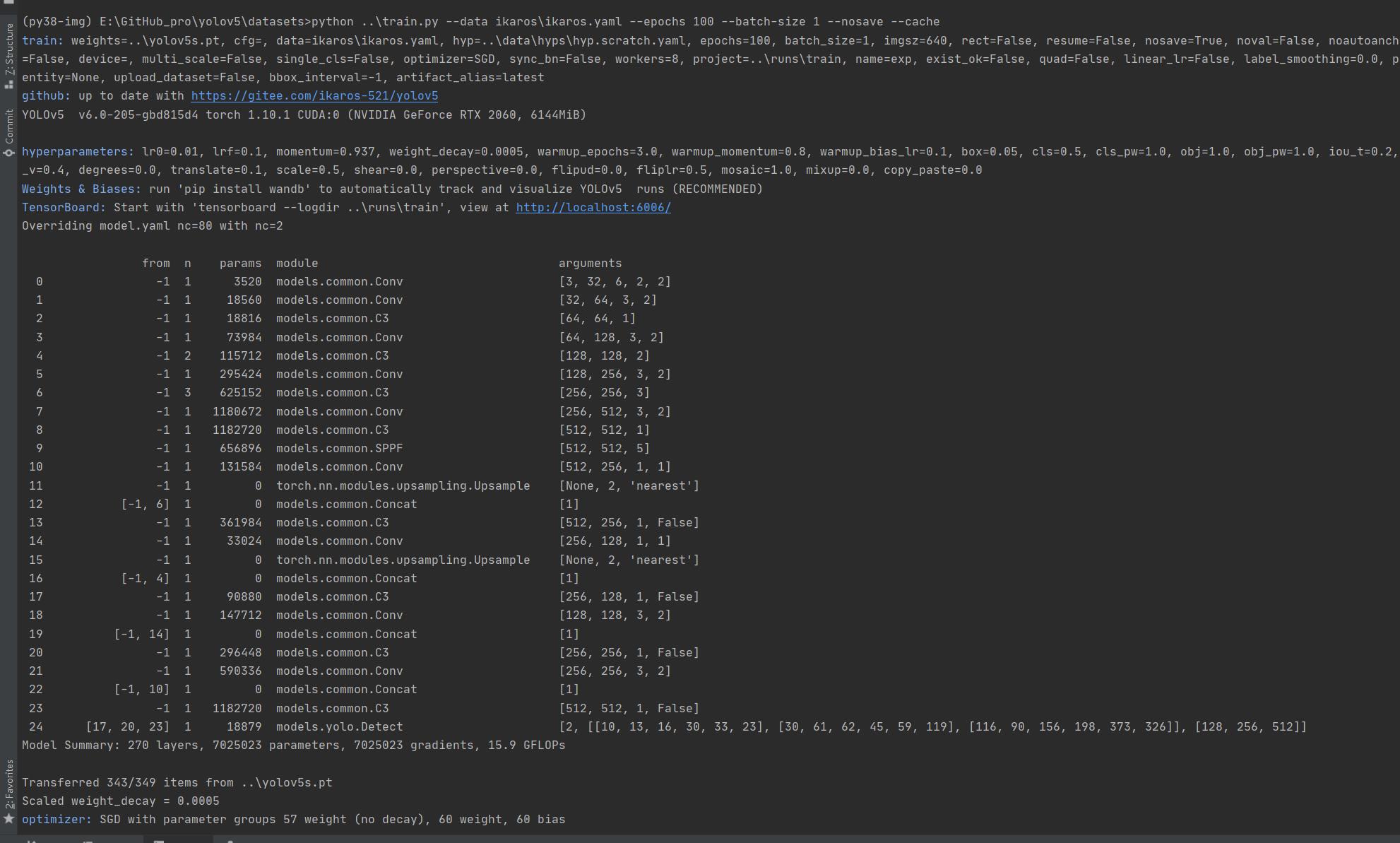
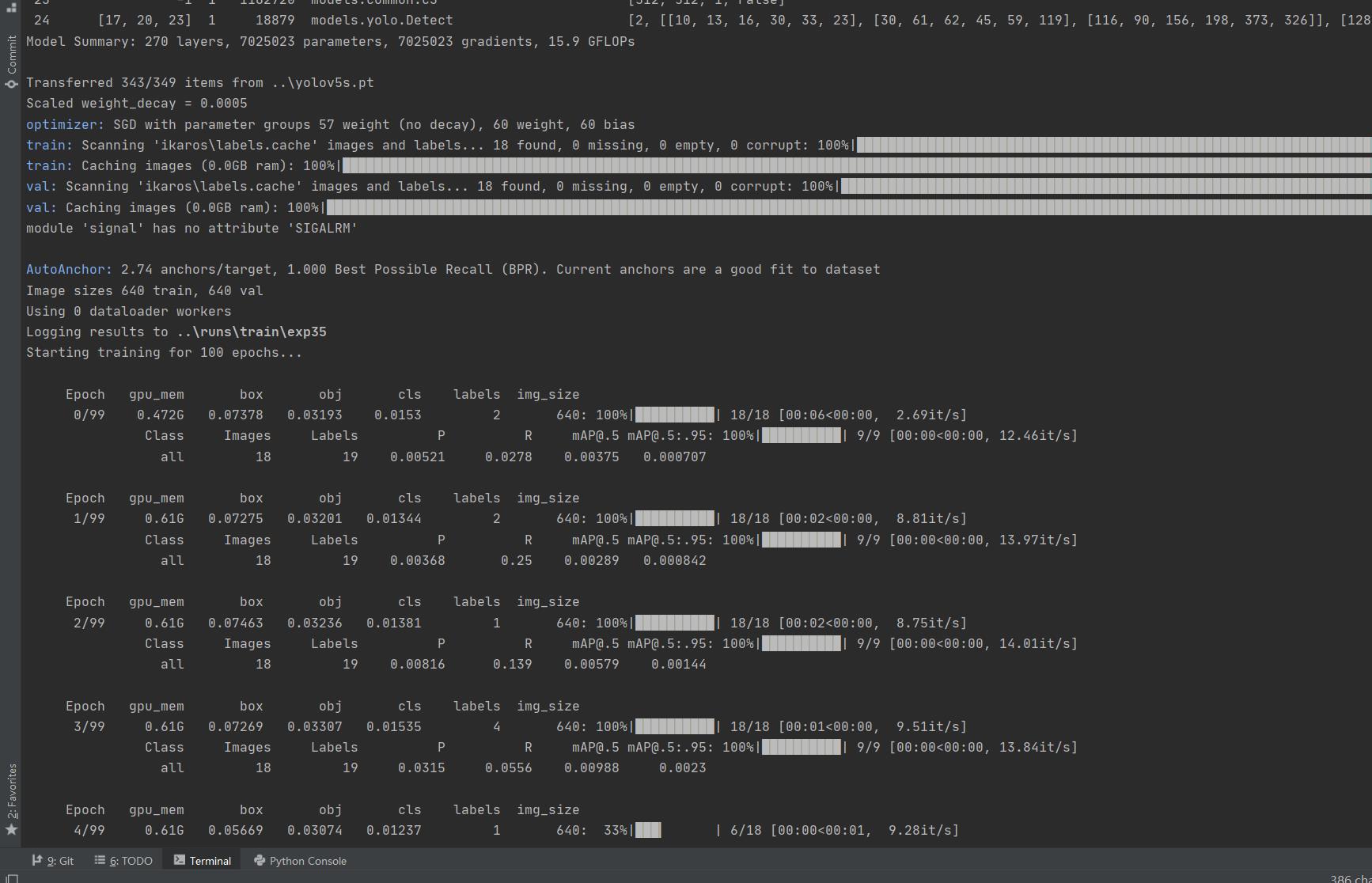
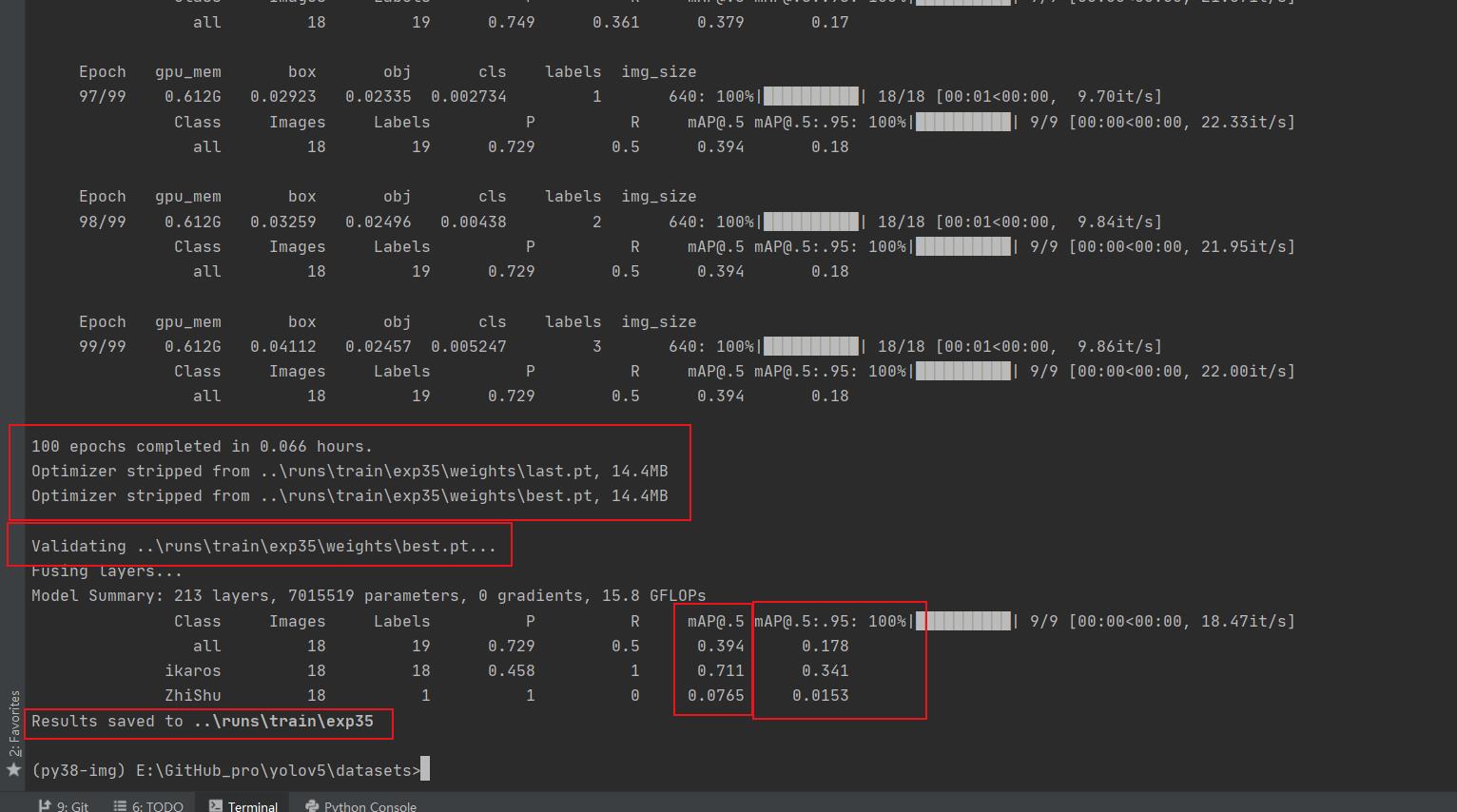
100组终于练好了。可以发现我们的锻炼结果不咋滴哈,all mAP@.5只有 0.394,没有0.5的置信度我很难办事呀,兄弟还得练哈
ps:对于目标检测中mAP@0.5的理解
mAP@0.5:mean Average Precision
通俗来说,就是给每一类分别计算AP,然后做mean平均。
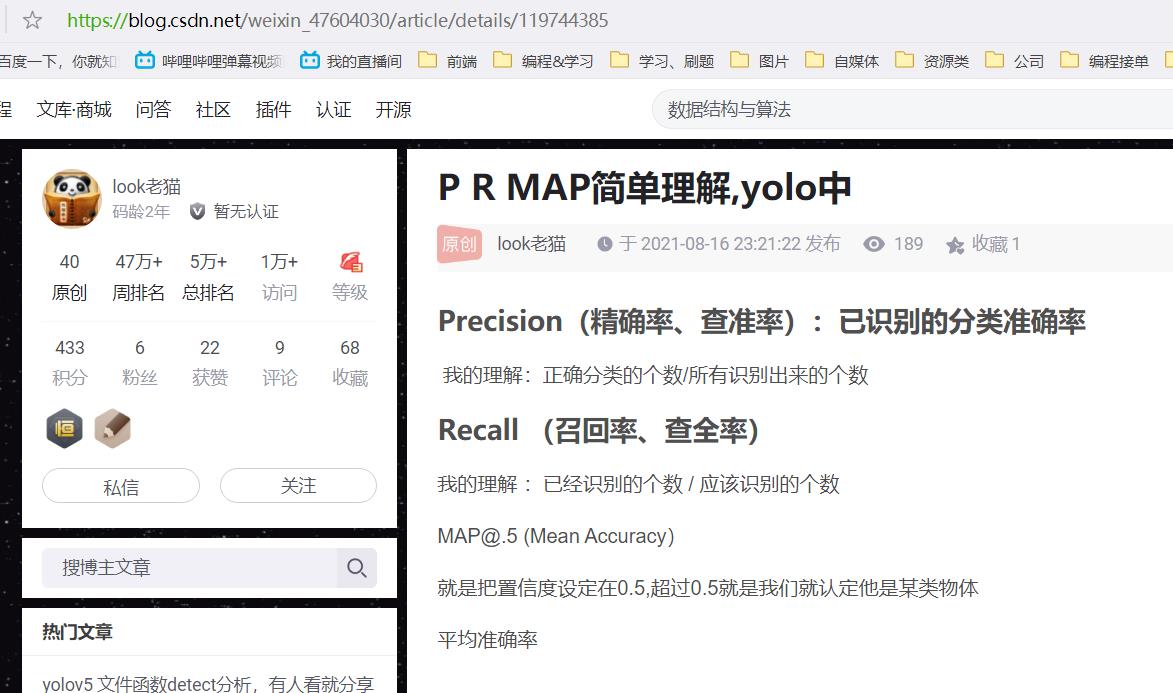
我们先拿这个练完100组的权重兄去测一测,置信度阈值设为0.3
python ..\\detect.py --weights ..\\runs\\train\\exp35\\weights\\best.pt --source ikaros\\images --conf-thres 0.3
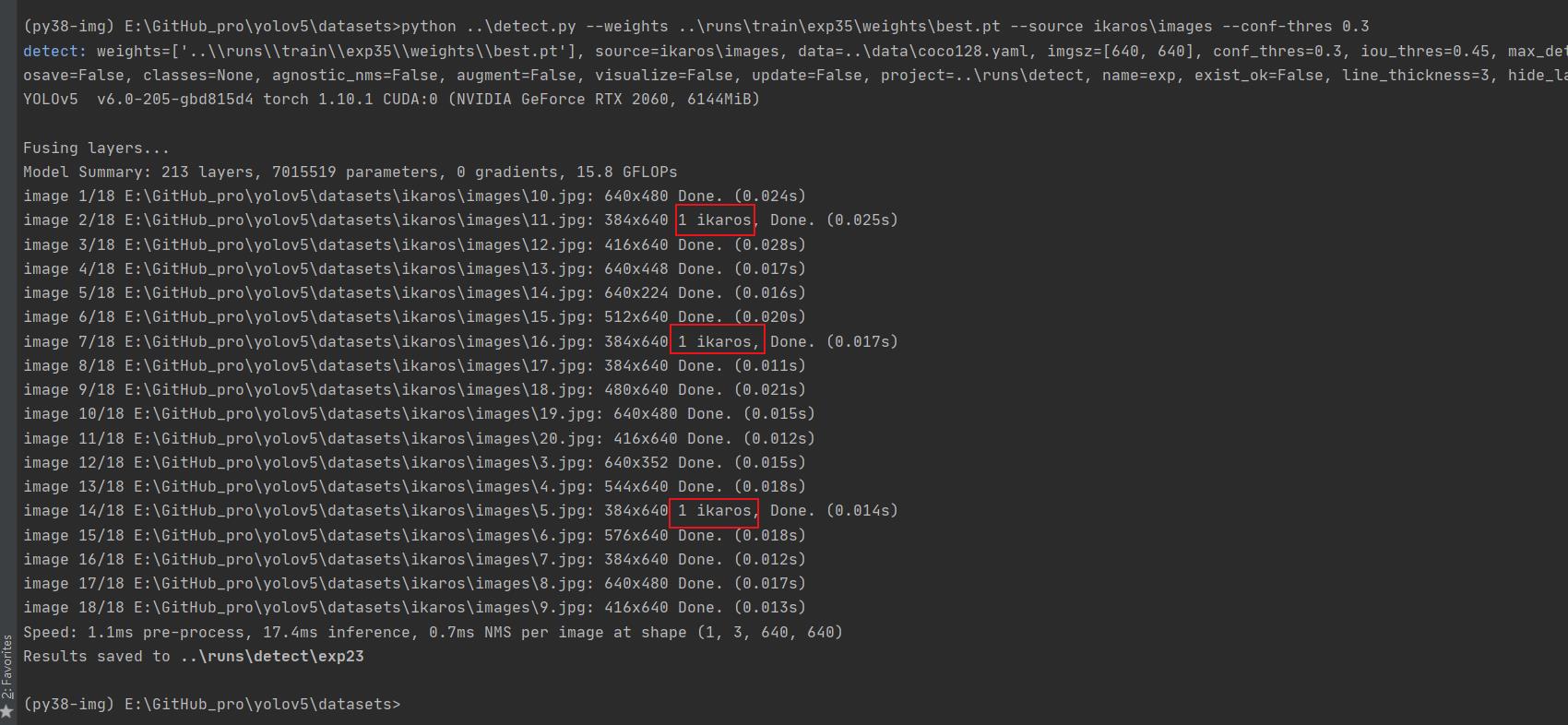
还行 还得多练练
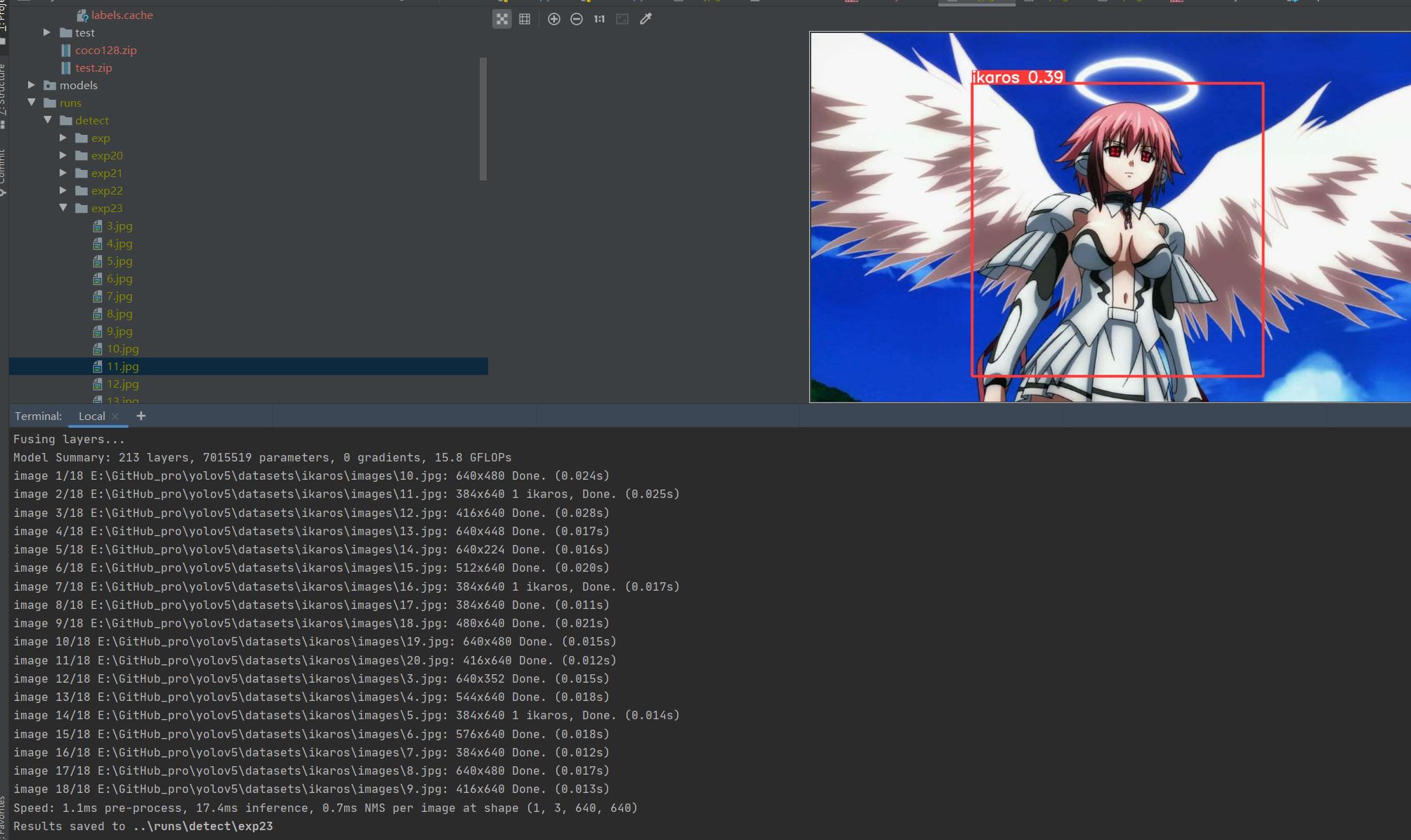
置信度阈值设为0.01
python ..\\detect.py --weights ..\\runs\\train\\exp35\\weights\\best.pt --source ikaros\\images --conf-thres 0.01
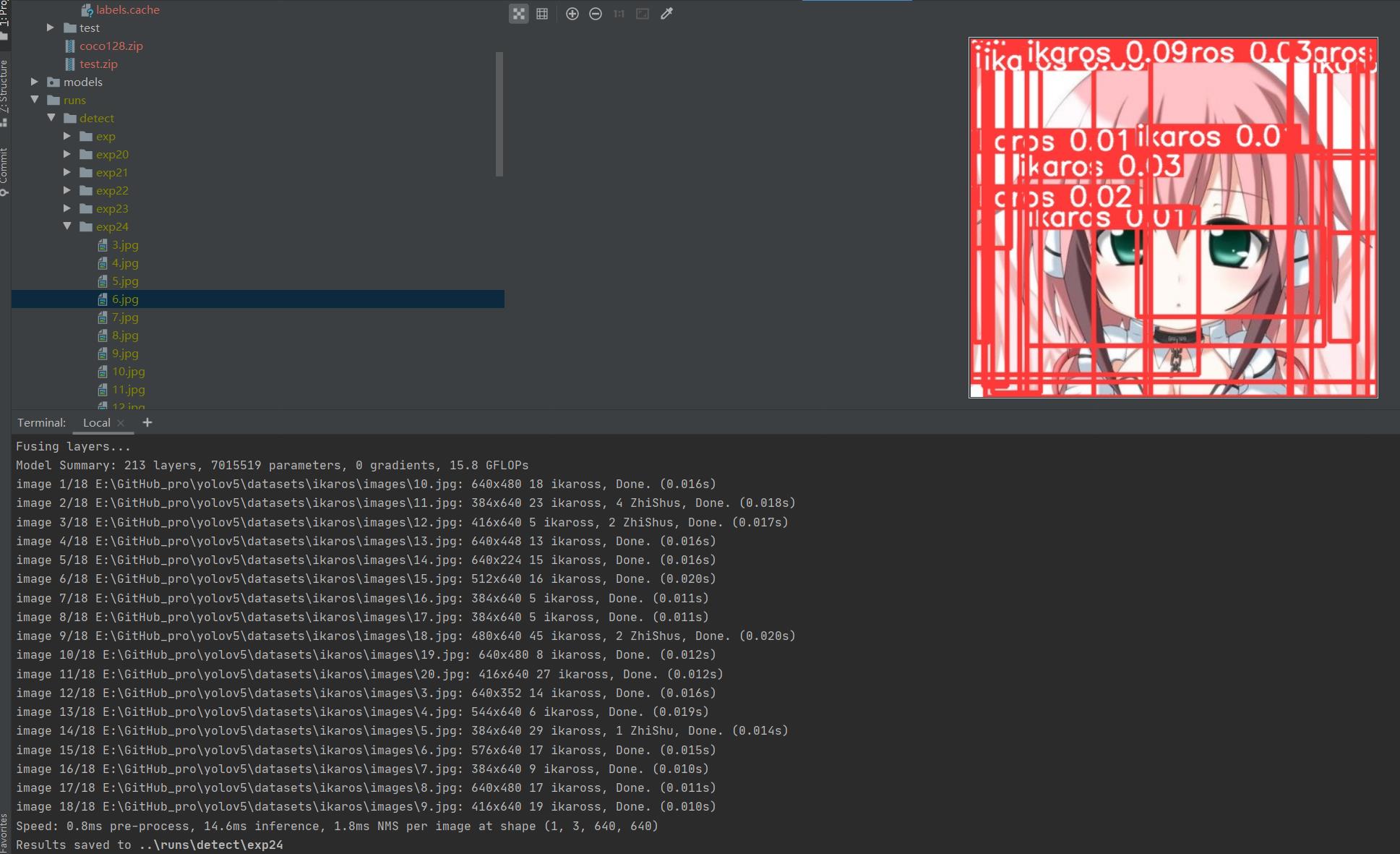
差不多了 在多练练。前面练好的pt不要丢,叫上继续训练 再来100组
python ..\\train.py --data ikaros\\ikaros.yaml --epochs 100 --weights ..\\runs\\train\\exp35\\weights\\best.pt --batch-size 1 --nosave --cache

再次 测试 python ..\\detect.py --weights ..\\runs\\train\\exp36\\weights\\last.pt --source ikaros\\images --conf-thres 0.5,差不多得了,有兴趣接着练
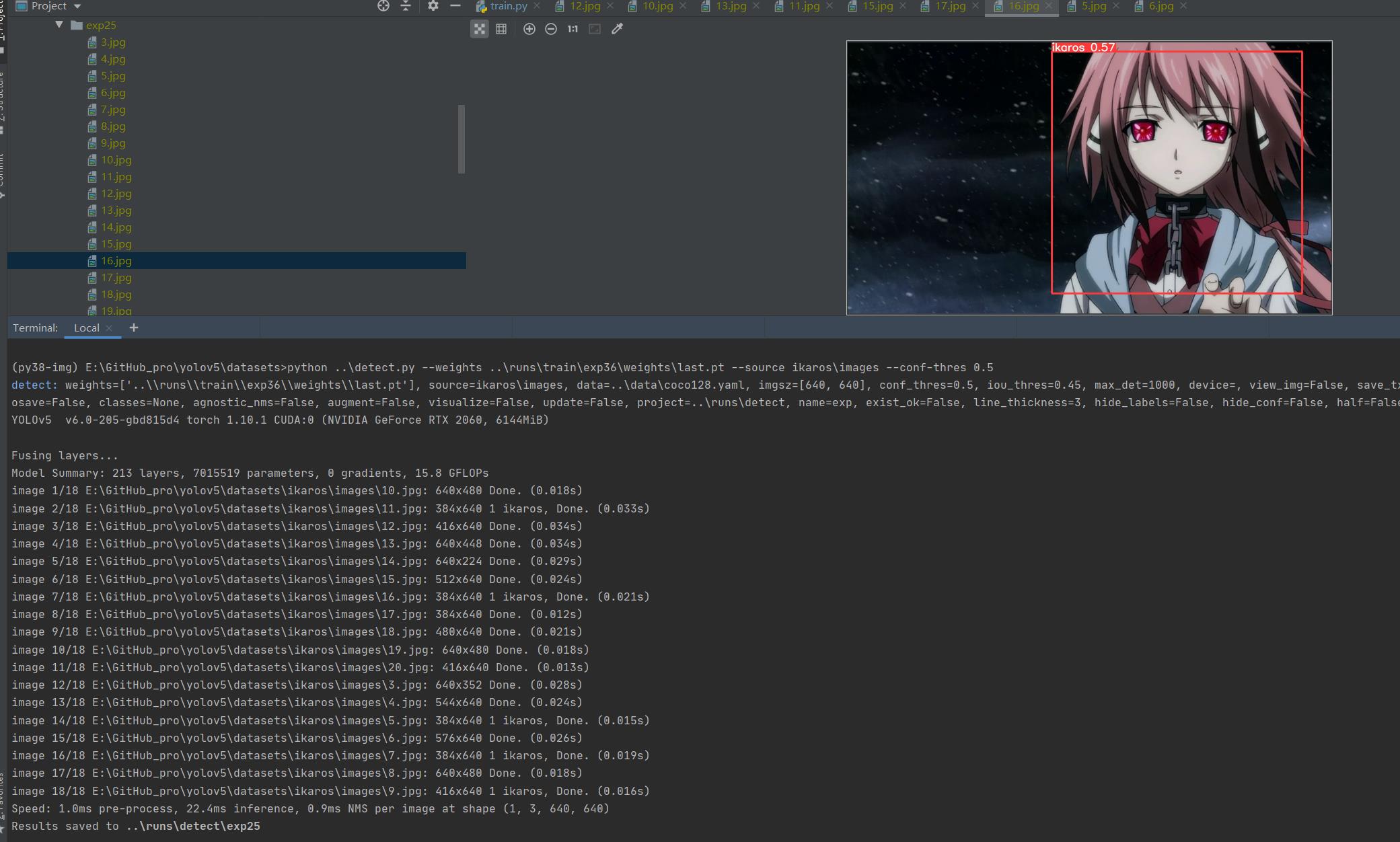
增加了样本数,继续锻炼
python ..\\train.py --data ikaros\\ikaros.yaml --epochs 100 --weights ..\\runs\\train\\exp36\\weights\\last.pt --batch-size 1 --workers 4 --nosave --cache

mAP@.5 0.745 效果不错了
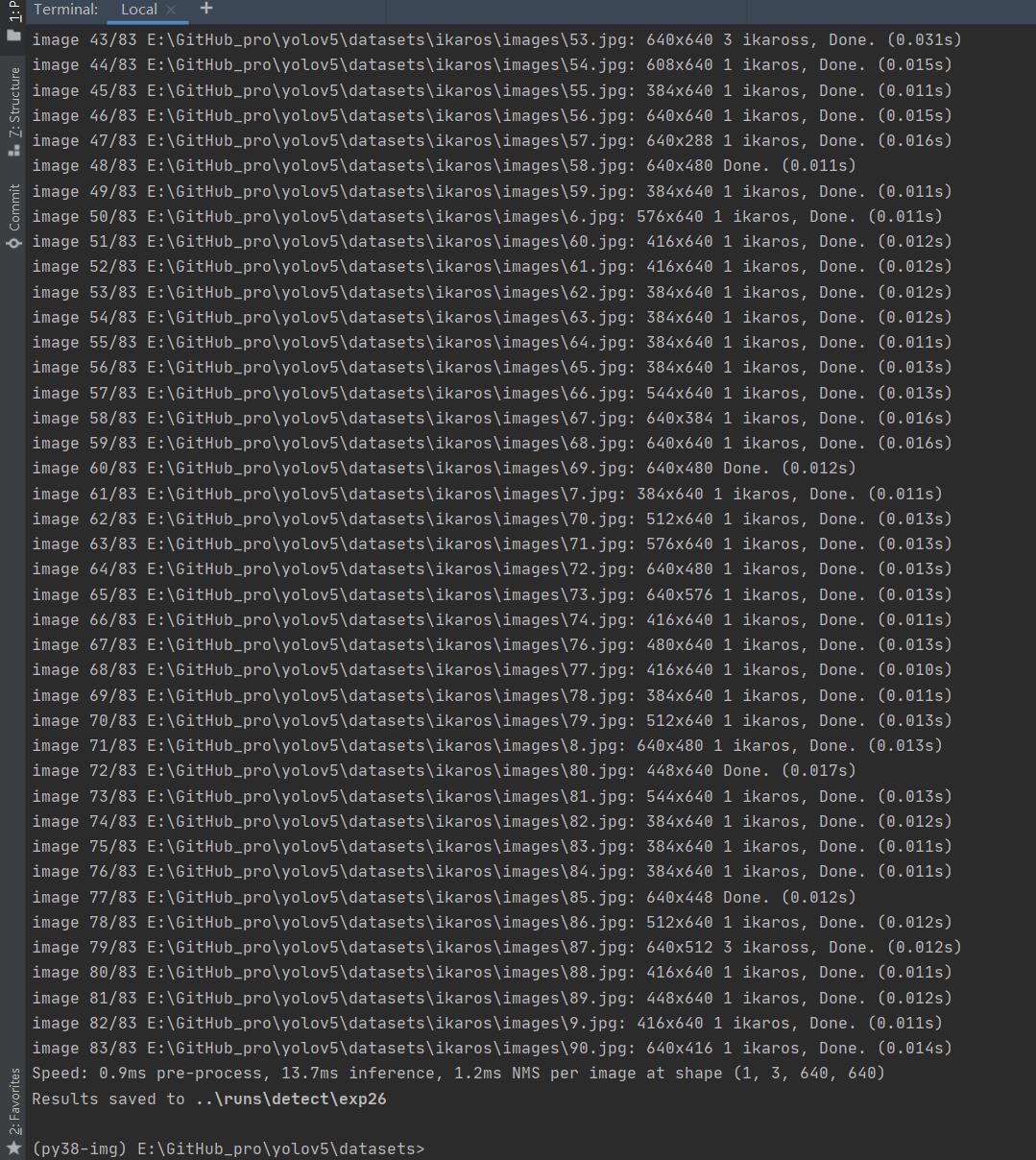
找个视频识别下
python ..\\detect.py --weights ..\\runs\\train\\ikaros\\ikaros.pt --source ..\\data\\videos\\FallenDown.mp4

拓展应用
打印信息只提取识别的结果(获取类名和置信值),不显示其他无用信息
效果如下:


替换detecy.py源码
# YOLOv5 🚀 by Ultralytics, GPL-3.0 license
"""
Run inference on images, videos, directories, streams, etc.
python detect2.py --weights yolov5s.pt --source data\\images\\bus.jpg --nosave
Usage - sources:
$ python path/to/detect.py --weights yolov5s.pt --source 0 # webcam
img.jpg # image
vid.mp4 # video
path/ # directory
path/*.jpg # glob
'https://youtu.be/Zgi9g1ksQHc' # YouTube
'rtsp://example.com/media.mp4' # RTSP, RTMP, HTTP stream
Usage - formats:
$ python path/to/detect.py --weights yolov5s.pt # PyTorch
yolov5s.torchscript # TorchScript
yolov5s.onnx # ONNX Runtime or OpenCV DNN with --dnn
yolov5s.xml # OpenVINO
yolov5s.engine # TensorRT
yolov5s.mlmodel # CoreML (MacOS-only)
yolov5s_saved_model # TensorFlow SavedModel
yolov5s.pb # TensorFlow GraphDef
yolov5s.tflite # TensorFlow Lite
yolov5s_edgetpu.tflite # TensorFlow Edge TPU
"""
import argparse
import os
import sys
from pathlib import Path
import cv2
import torch
import torch.backends.cudnn as cudnn
FILE = Path(__file__).resolve()
ROOT = FILE.parents[0] # YOLOv5 root directory
if str(ROOT) not in sys.path:
sys.path.append(str(ROOT)) # add ROOT to PATH
ROOT = Path(os.path.relpath(ROOT, Path.cwd())) # relative
from models.common import DetectMultiBackend
from utils.datasets import IMG_FORMATS, VID_FORMATS, LoadImages, LoadStreams
from utils.general import (LOGGER, check_file, check_img_size, check_imshow, check_requirements, colorstr,
increment_path, non_max_suppression, print_args, scale_coords, strip_optimizer, xyxy2xywh)
from utils.plots import Annotator, colors, save_one_box
from utils.torch_utils import select_device, time_sync
@torch.no_grad()
def run(weights=ROOT / 'yolov5s.pt', # model.pt path(s)
source=ROOT / 'data/images', # file/dir/URL/glob, 0 for webcam
data=ROOT / 'data/coco128.yaml', # dataset.yaml path
imgsz=(640, 640), # inference size (height, width)
conf_thres=0.25, # confidence threshold
iou_thres=0.45, # NMS IOU threshold
max_det=1000, # maximum detections per image
device='', # cuda device, i.e. 0 or 0,1,2,3 or cpu
view_img=False, # show results
save_txt=False, # save results to *.txt
save_conf=False, # save confidences in --save-txt labels
save_crop=False, # save cropped prediction boxes
nosave=False, # do not save images/videos
classes=None, # filter by class: --class 0, or --class 0 2 3
agnostic_nms=False, # class-agnostic NMS
augment=False, # augmented inference
visualize=False, # visualize features
update=False, # update all models
project=ROOT / 'runs/detect', # save results to project/name
name='exp', # save results to project/name
exist_ok=False, # existing project/name ok, do not increment
line_thickness=3, # bounding box thickness (pixels)
hide_labels=False, # hide labels
hide_conf=False, # hide confidences
half=False, # use FP16 half-precision inference
dnn=False, # use OpenCV DNN for ONNX inference
):
source = str(source)
save_img = not nosave and not source.endswith('.txt') # save inference images
is_file = Path(source).suffix[1:] in (IMG_FORMATS + VID_FORMATS)
is_url = source.lower().startswith(('rtsp://', 'rtmp://', 'http://', 'https://'))
webcam = source.isnumeric() or source.endswith('.txt') or (is_url and not is_file)
if is_url and is_file:
source = check_file(source) # download
# Directories
save_dir = increment_path(Path(project) / name, exist_ok=exist_ok) # increment run
(save_dir / 'labels' if save_txt else save_dir).mkdir(parents=True, exist_ok=True) # make dir
# Load model
device = select_device(device)
model = DetectMultiBackend(weights, device=device, dnn=dnn, data=data)
stride, names, pt, jit, onnx, engine = model.stride, model.names, model.pt, model.jit, model.onnx, model.engine
imgsz = check_img_size(imgsz, s=stride) # check image size
# Half
half &= (pt or jit or onnx or engine) and device.type != 'cpu' # FP16 supported on limited backends with CUDA
if pt or jit:
model.model.half() if half else model.model.float()
# Dataloader
if webcam:
view_img = check_imshow()
cudnn.benchmark = True # set True to speed up constant image size inference
dataset = LoadStreams(source, img_size=imgsz, stride=stride, auto=pt)
bs = len(dataset) # batch_size
else:
dataset = LoadImages(source, img_size=imgsz, stride=stride, auto=pt)
bs = 1 # batch_size
vid_path, vid_writer = [None] * bs, [None] * bs
# Run inference
model.warmup(imgsz=(1, 3, *imgsz), half=half) # warmup
dt, seen = [0.0, 0.0, 0.0], 0
for path, im, im0s, vid_cap, s in dataset:
# 自定义存储输出结果的变量
out_str = ''
out_str2 = ''
t1 = time_sync()
im = torch.from_numpy(im).to(device)
im = im.half() if half else im.float() # uint8 to fp16/32
im /= 255 # 0 - 255 to 0.0 - 1.0
if len(im.shape) == 3:
im = im[None] # expand for batch dim
t2 = time_sync()
dt[0] += t2 - t1
# Inference
以上是关于YOLOV5 环境搭建和使用记录的主要内容,如果未能解决你的问题,请参考以下文章